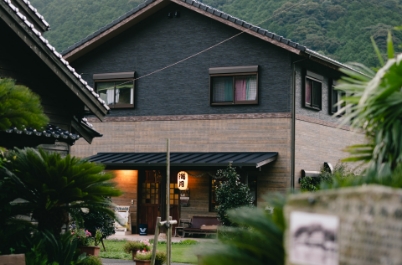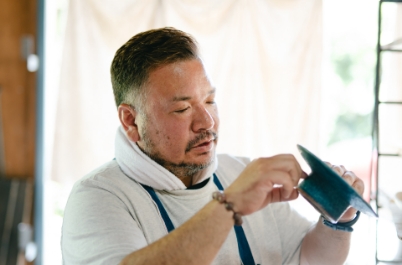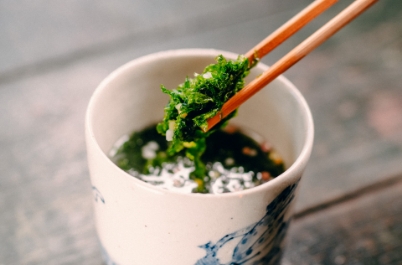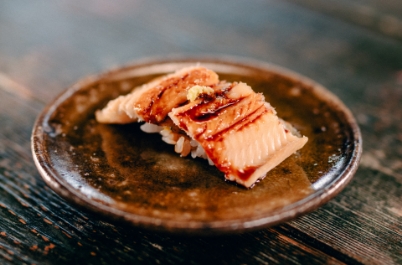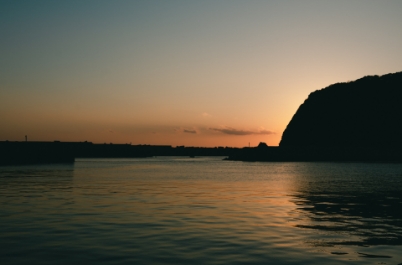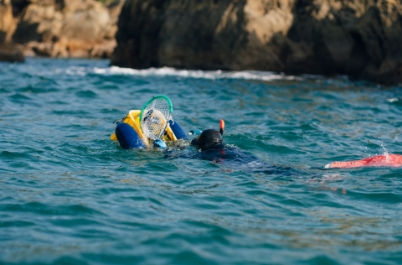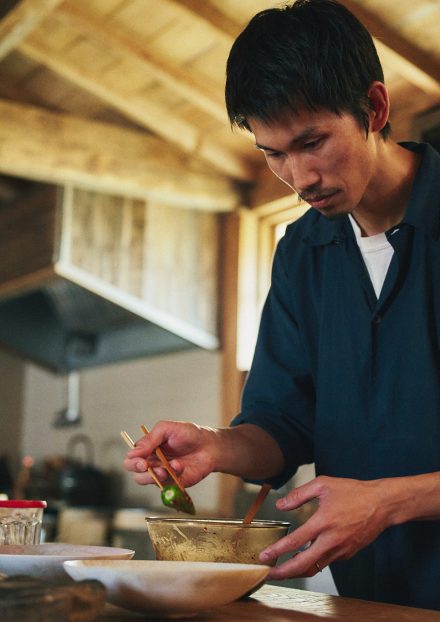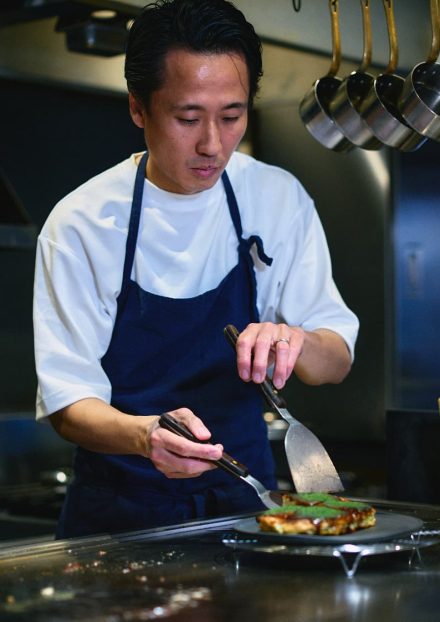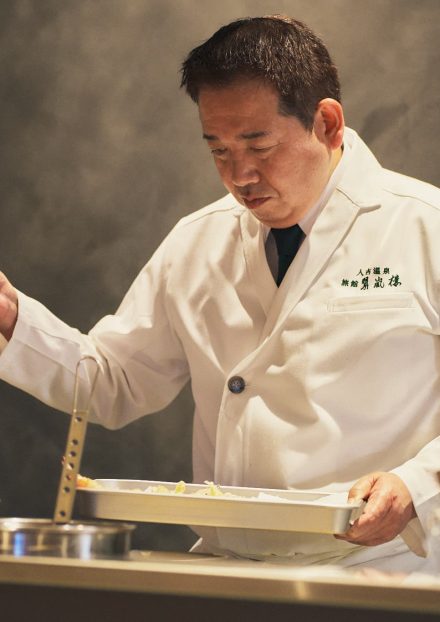Taste history, nature, and modern Sakitsu all at once
Tsuyoshi Miyashita of Kurage
Prolougue
Story 1 The lifelong quest of a man who loves Sakitsu
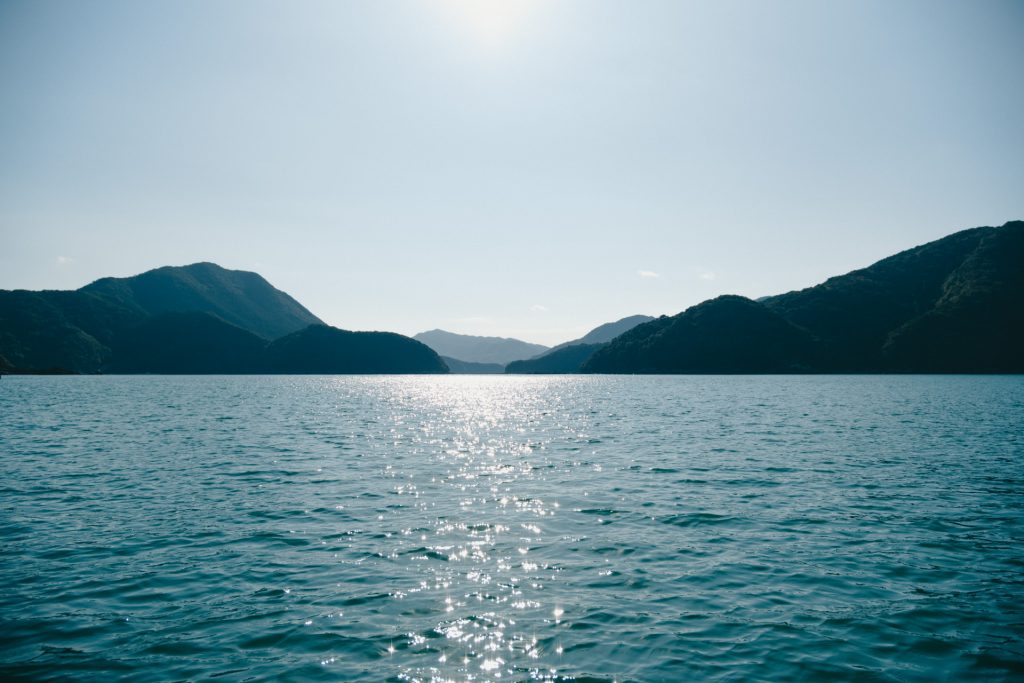
Oceans comprise about 70% of the earth’s surface. These great oceans give us delicious seafood as well as comfort, but they also can be harsh. Oceans still harbor many unsolved mysteries, and they seem to be endless.
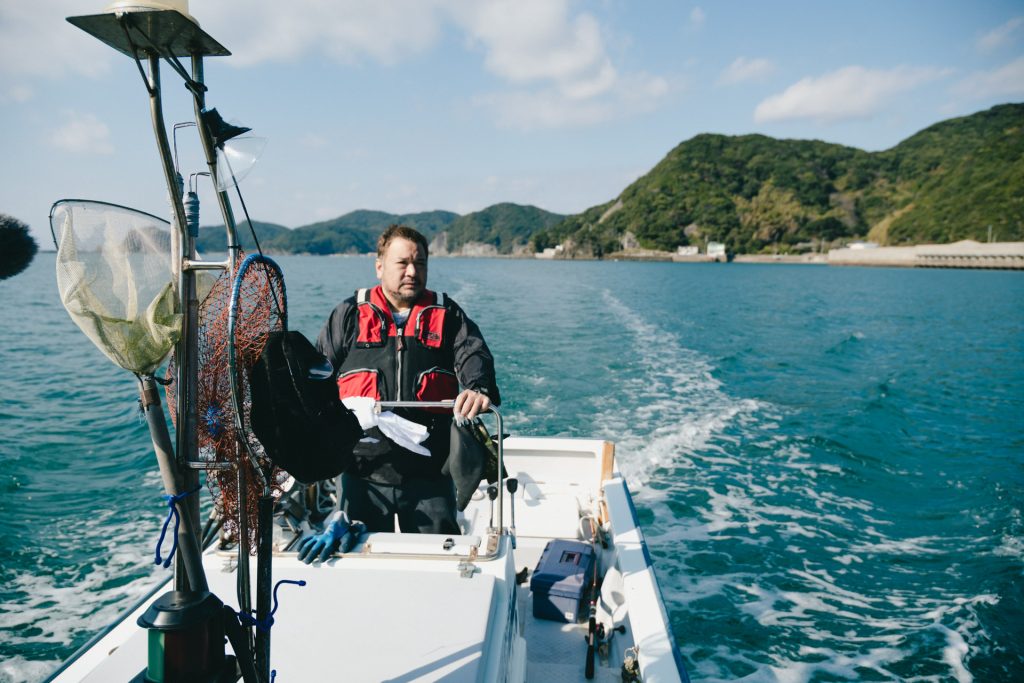
Premium Chef Tsuyoshi Miyashita, the owner of Kurage and featured here, has lived with this sea, which can be both harsh and gentle, all his life. The village of Sakitsu in Amakusa, where he grew up and where he runs his restaurant, has drawn much attention since being designated as a World Cultural Heritage site.
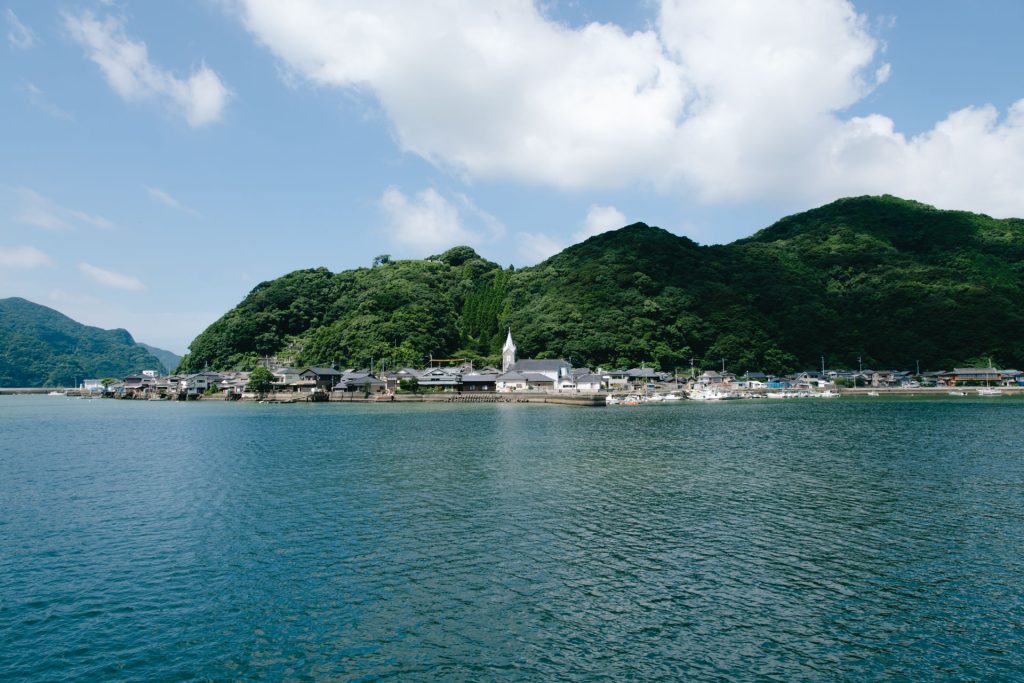
Sakitsu is located on the northern shore of Yokaku Bay, which empties into the East China Sea. It is a fishing village with a flourishing industry, thanks to fertile fishing grounds. The reason that this fishing village was registered as a World Cultural Heritage site is its religious ties.
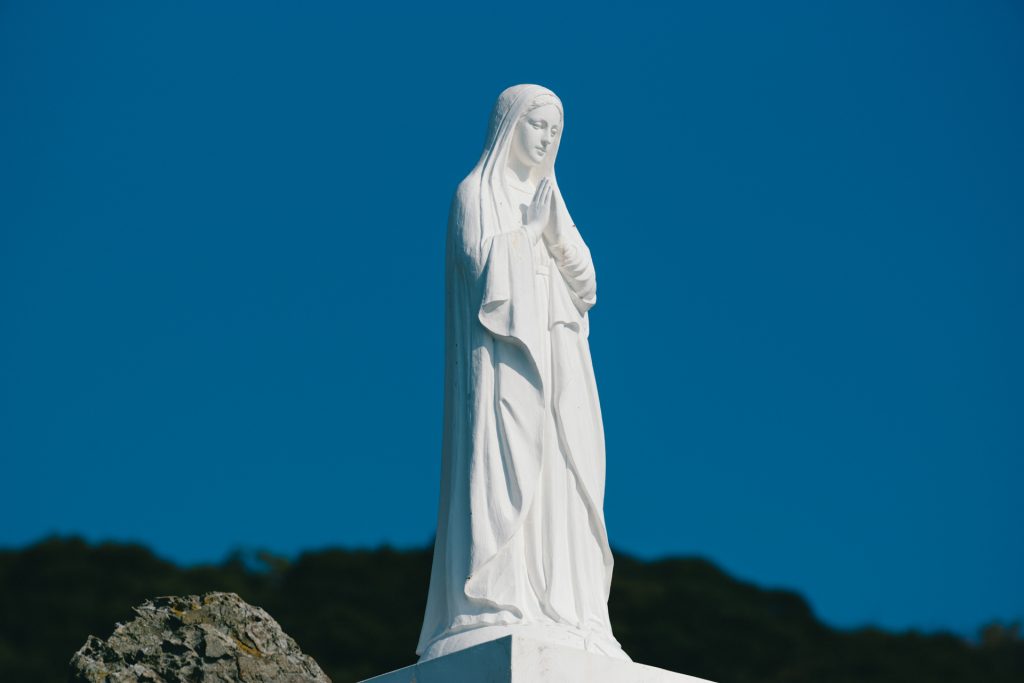
Most of the people who live here are followers of Christianity, which came here around the middle of the 16th century. Christianity was banned in the 17th century by a decree, but their ancestors continued practicing their faith in secret as hidden Christians.

Sakitsu is known for its unique religious practices, such as worshiping the remains of pearl oysters as St. Mary. This is the form that religion has taken in this fishing village. Sakitsu is unique in that three religions—Christianity, Shintoism, and Buddhism—coexist here.
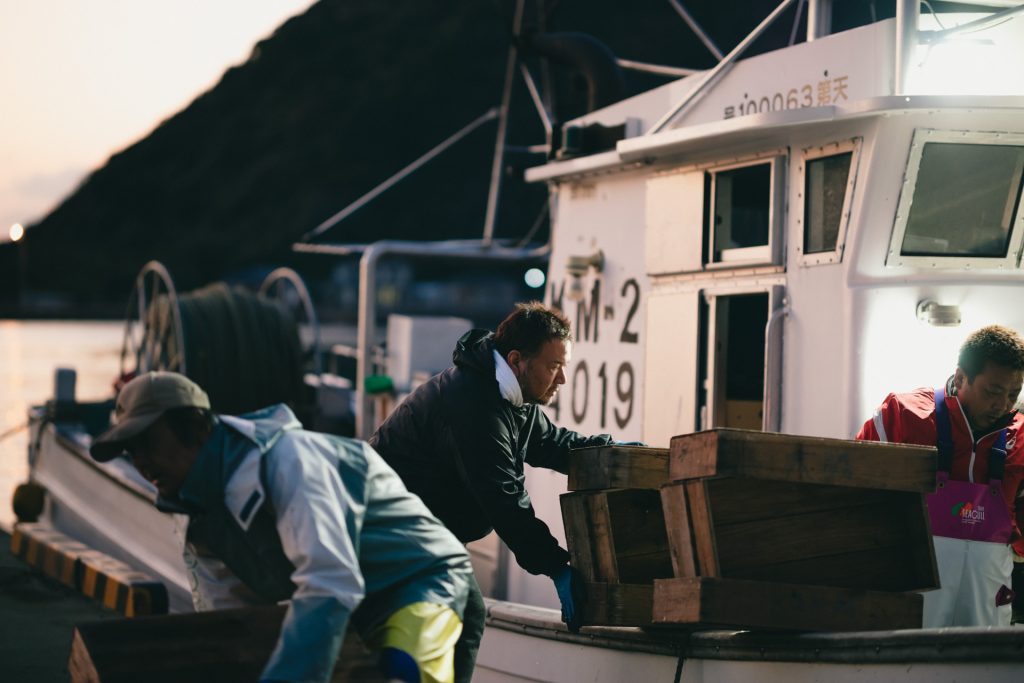
“How will this village deal with the future?” says Chef Miyashita, who came to this way of thinking through his experience growing up watching his parents, who both worked as fishers. “A job dealing with fish. I decided that I wanted to pursue a career in cooking. The reason lies in the customs of this village. During holidays, everyone in the village celebrates by gathering for a feast. My father was in charge of the food, and he prepared the sashimi. When I saw that, I thought it was great, so I decided to do it too.”
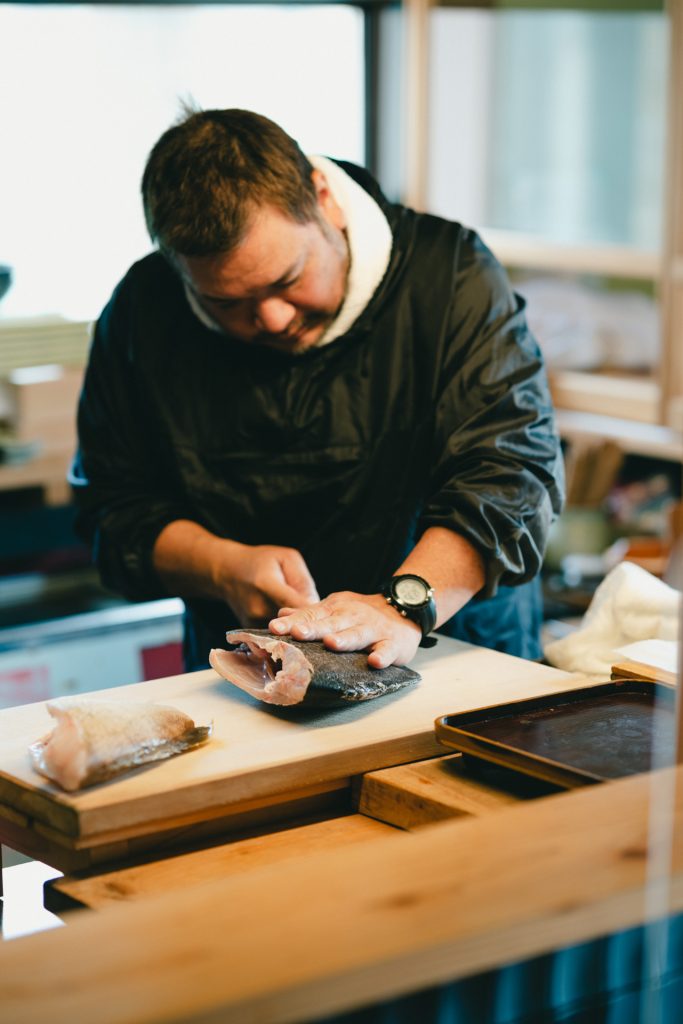
He says that all of his past experiences have been useful. This includes training as a sushi chef in Osaka, Kyoto, and Hyogo prefectures, along with experience working at Japanese pubs and restaurants, conveyor belt sushi bars, and food delivery services. He also worked as a visiting chef and participated in weddings. He returned to Sakitsu in 2011 and opened a take-out sushi shop named Ikari.
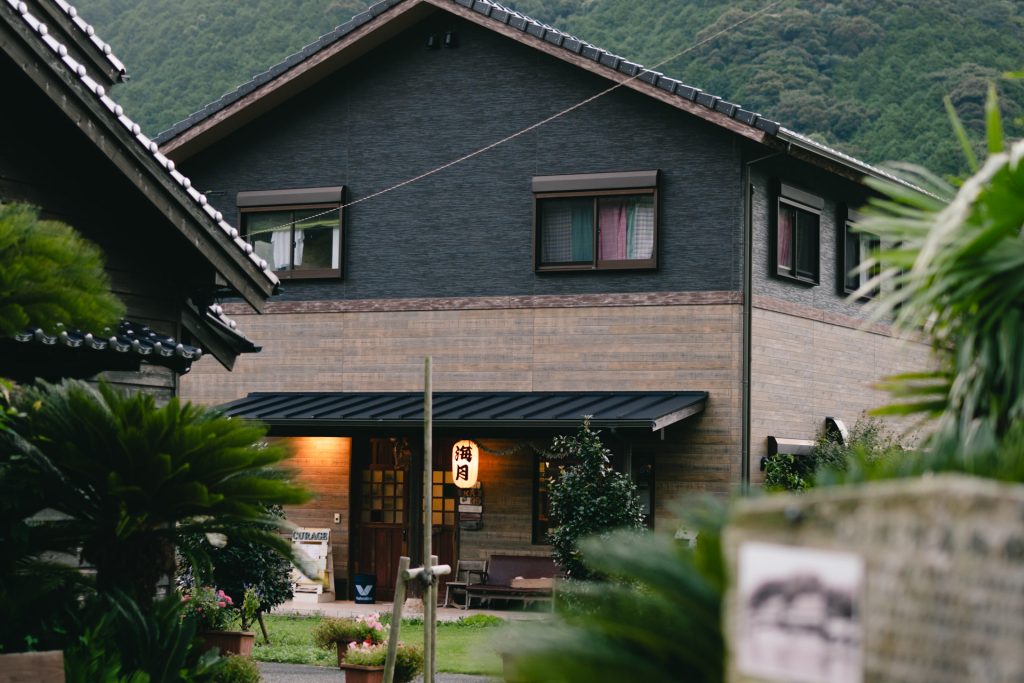
In 2013, he changed the name and relaunched it as Kurage. Kurage moved to its current location in 2017. During that time, besides running the restaurant, he was also taking on temporary assignments at various venues, including bars in Kumamoto City and as a visiting chef on ships. Many food critics became his fans, and his fame spread by word of mouth to the extent that more people started visiting Sakitsu.
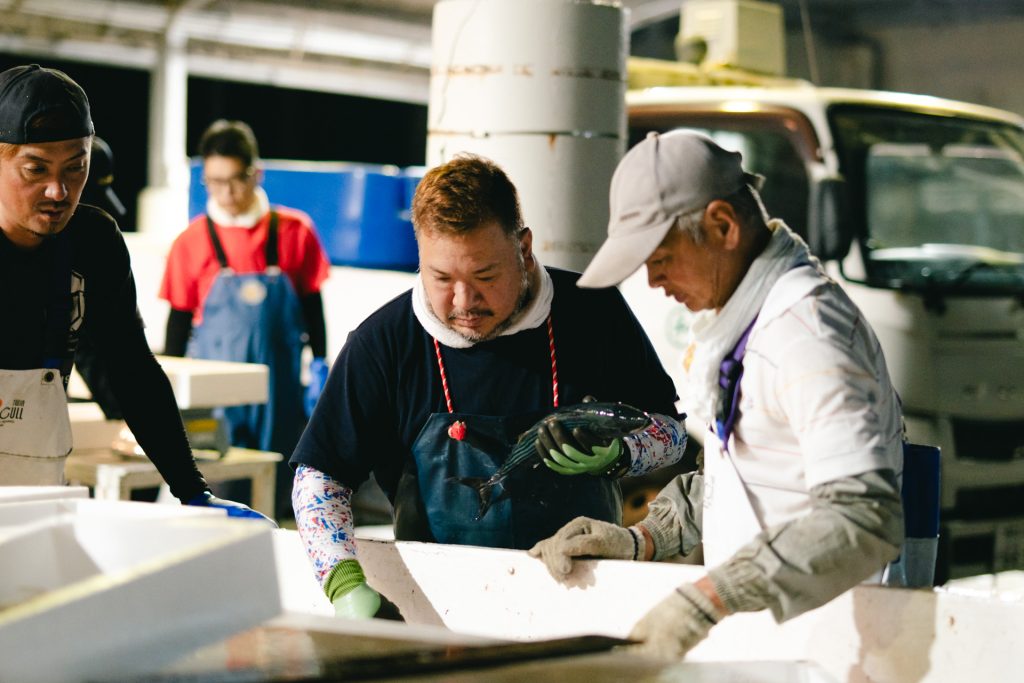
Chef Miyashita’s day begins with procuring fish from the port. As the fishermen, who have known him since he was little, unload their catch, he evaluates the fish while helping them. Most of the seafood served at Kurage is caught off the western coast of Amakusa. The conversation continues, “How is the fish today?” “I caught flounder. Take some.”
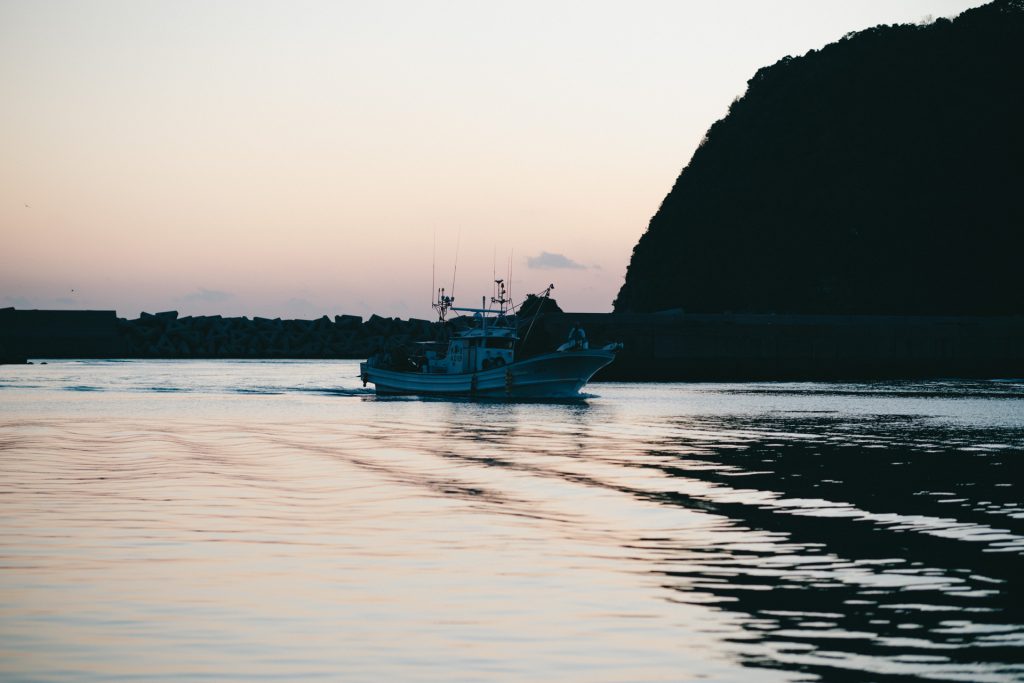
A large stationary fishing net has been installed about 10 minutes away from the fishing port to catch migratory fish lured there. This is a traditional fishing method in the region. People here have been living with the sea for a long time, and they know that resources are finite. The holes in the net are therefore large so that no overfishing occurs.
These efforts are being made with sustainable fishing in mind. In environmental terms, this fishing method is ideal, and it keeps fuel costs down, as it only takes about 10 minutes to get from the port to the fishing ground.
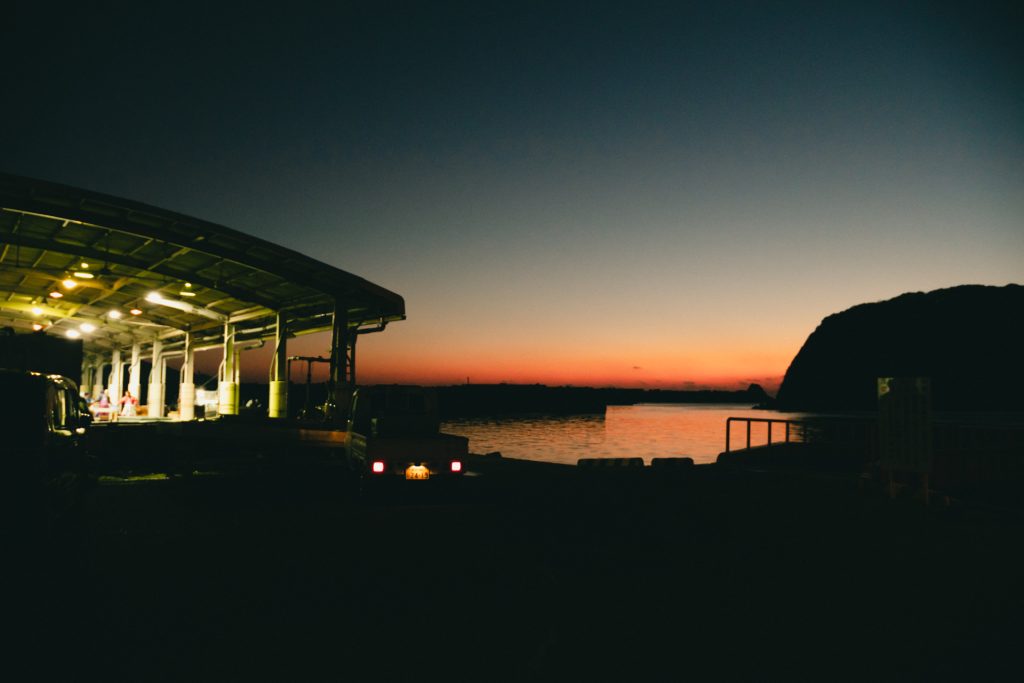
Sakitsu Village, which Mr. Miyashita strongly desires to preserve and pass on to the next generation
The food at Kurage is not just good sushi and cooking. It is a tale of cuisine with a long and noble history and is replete with the bounty of the harsh, yet gentle sea. Let us now embark on a food journey created by Chef Miyashita.
Story 2 A time to savor Sakitsu with unvarnished simplicity
Facing the sea, Kurage comprises a counter with seven seats. Looking out from one’s seat through the small window at the entrance, one can see the sparkling sea.
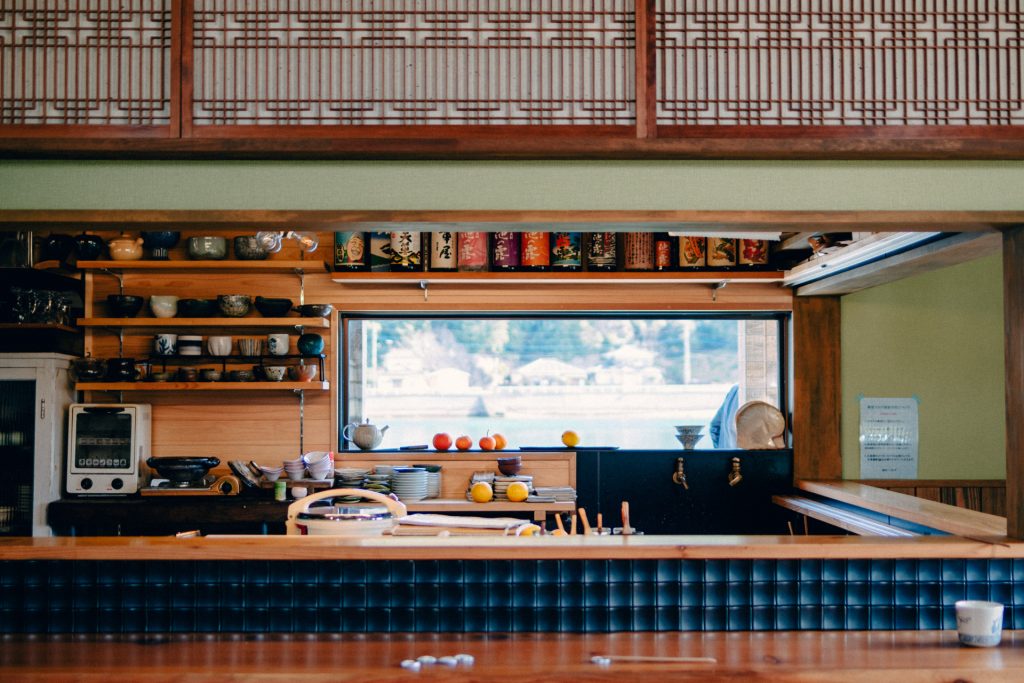
“The first place that I opened after coming back home was called Ikari because it embodied my desire to put down roots in the community. I really wanted to name the current restaurant after the fishing god Ebisu, but I thought that would be presumptuous. Then I found out that another incarnation of Ebisu is a jellyfish, so I named it Kurage (jellyfish).” When the moon is full, its reflection on the surface of the sea looks like that of a floating jellyfish.
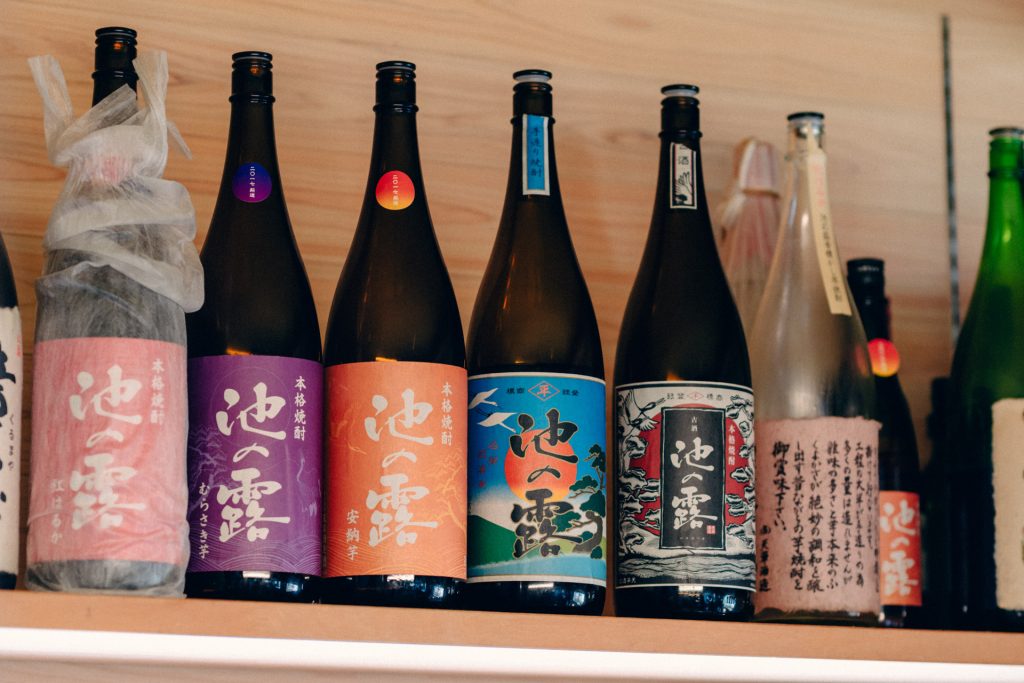
Drinking Amakusa shochu while gazing out the window is one of the great pleasures of Kurage. Let’s take a mellow journey through good food.
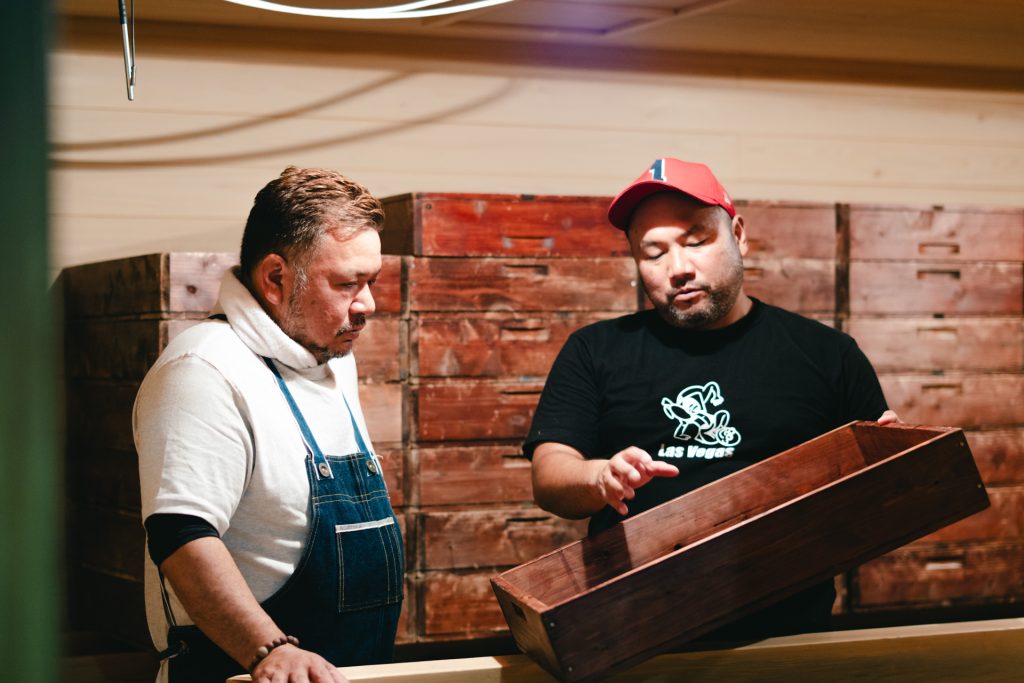
Chef Miyashita’s Premium Menu is full of each and every Amakusa delicacy.
The shochu makes one feel loose like a jellyfish. It is made by Amakusa Shuzo and Co. When the brewery’s representative, Yutaka Hirashita, and Mr. Miyashita stand next to each other, they look so much alike that you might want to ask them if they are brothers. Both of them love Amakusa, where they grew up, and they both have the same desire to communicate Amakusa’s charms.
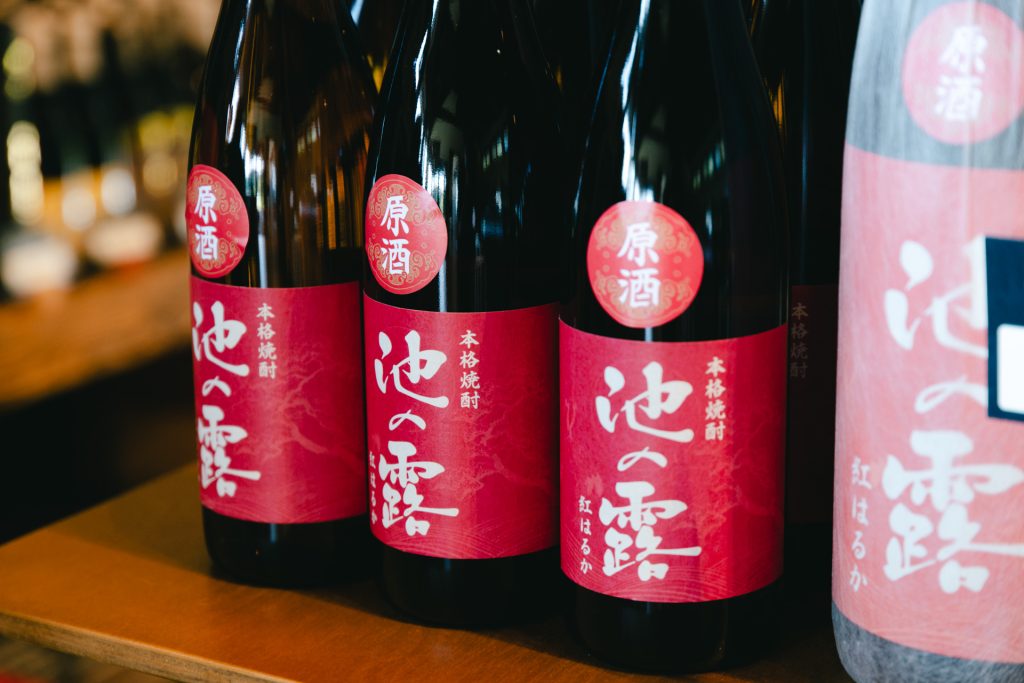
“I don’t want to make a shochu that’s boring,” says Mr. Hirashita. To create a unique flavor and bring out the full characteristics of the ingredients, he does not rely on machinery for the difficult process of temperature control during the rice malt production. He insists on doing it manually.
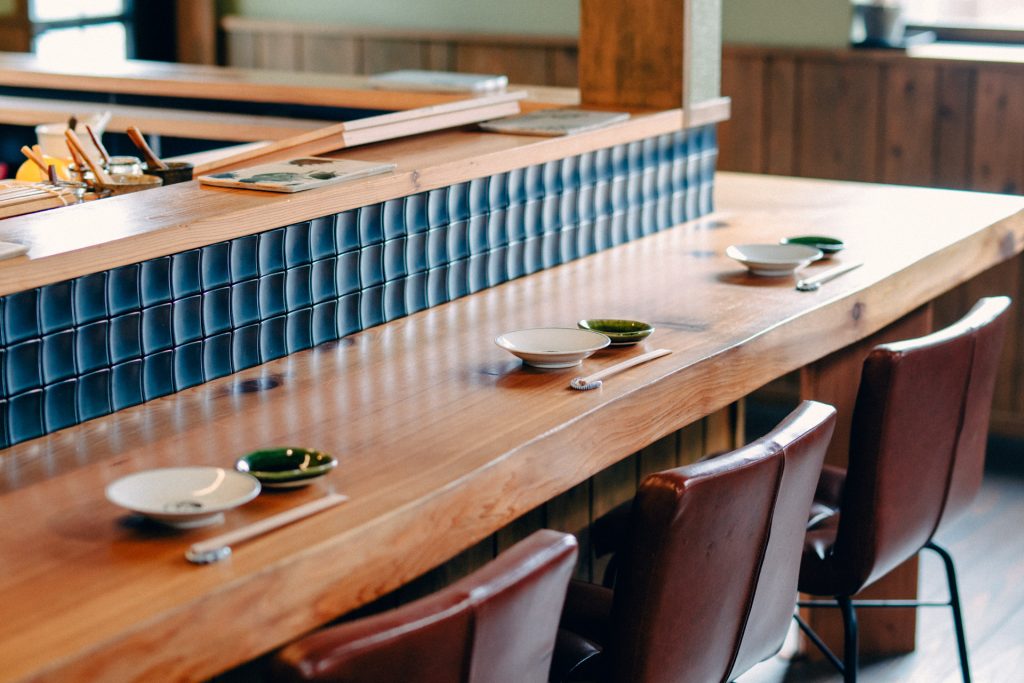
At Kurage, the plates for sushi and other tableware arranged on the counter are Amakusa ceramics.
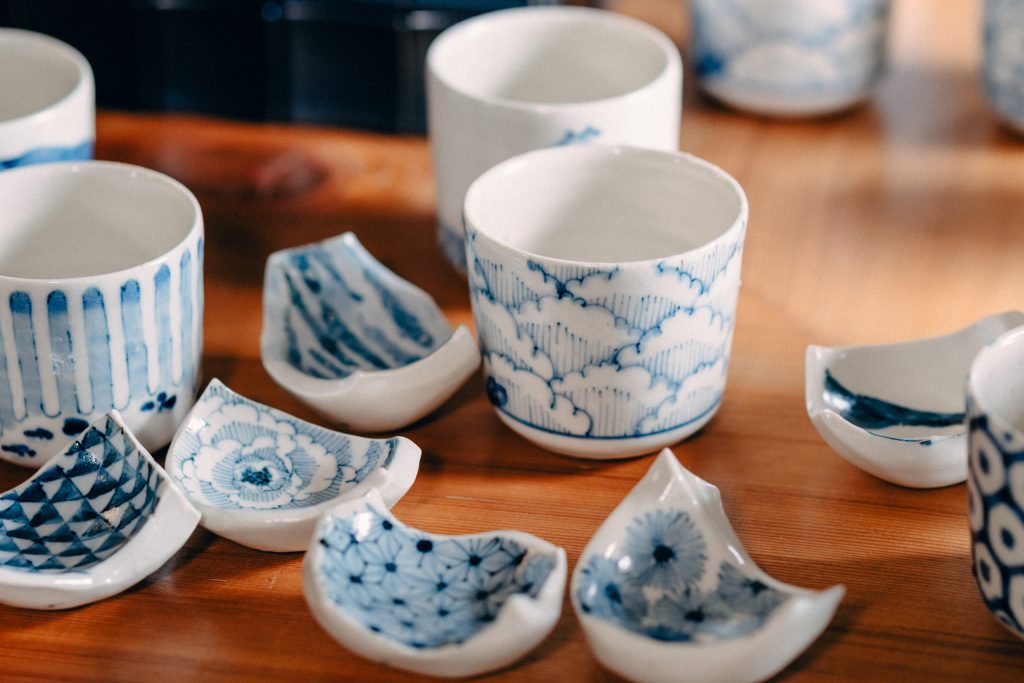
Amakusa ceramics are a high-quality porcelain with a history of more than 250 years. Twenty-three kilns are currently in operation, and these ceramics come in varied styles. Kurage uses many of them, so diners may feel as though they are enjoying a tour of the kilns with their meal.
For this occasion, tableware from three additional potters—Ayoo Pottery, Yuko Shige, and the Jyurogama kiln—is used. The tableware is new, including the sushi plates, the covered bowls, and the soup bowls.
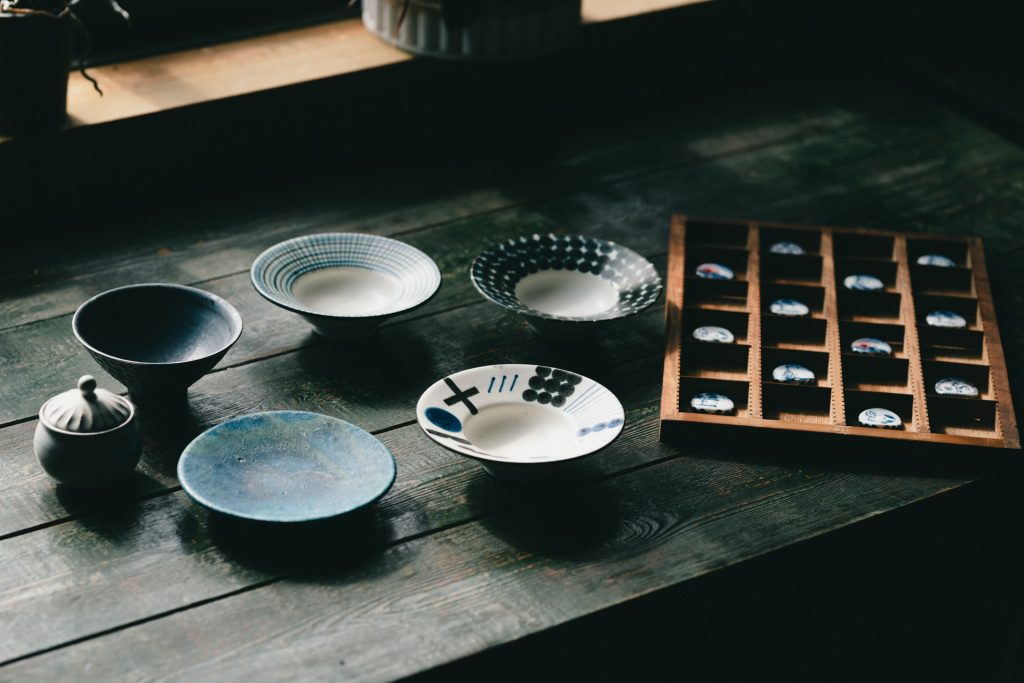
Among these, the Ayoo pottery is a new brand started by Naonobu Kanazawa, who became independent from the popular Maruo Ware.
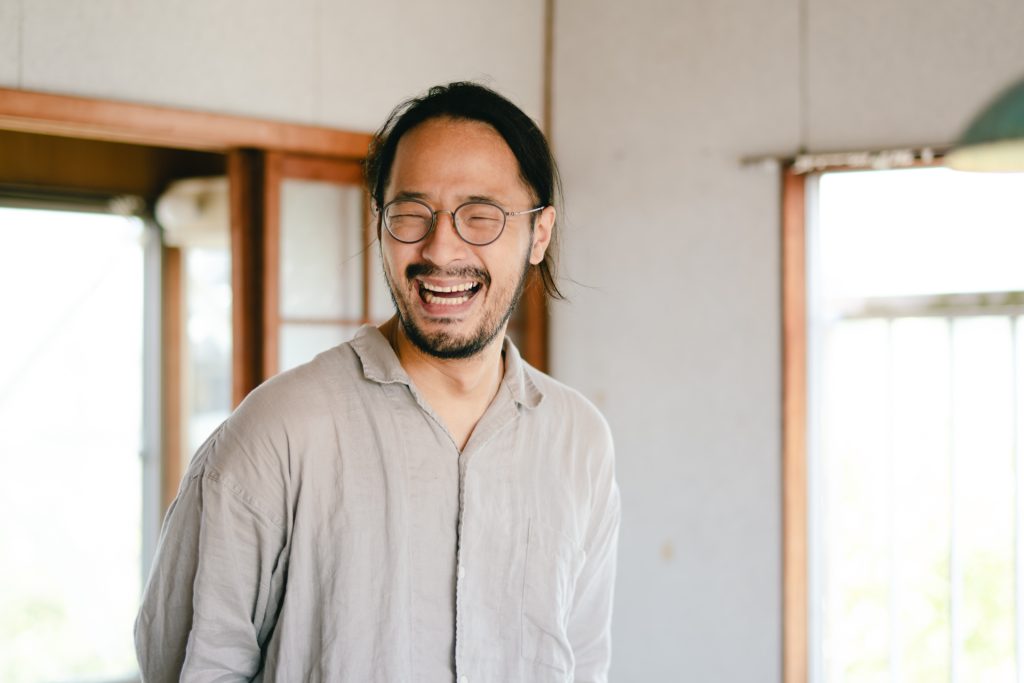
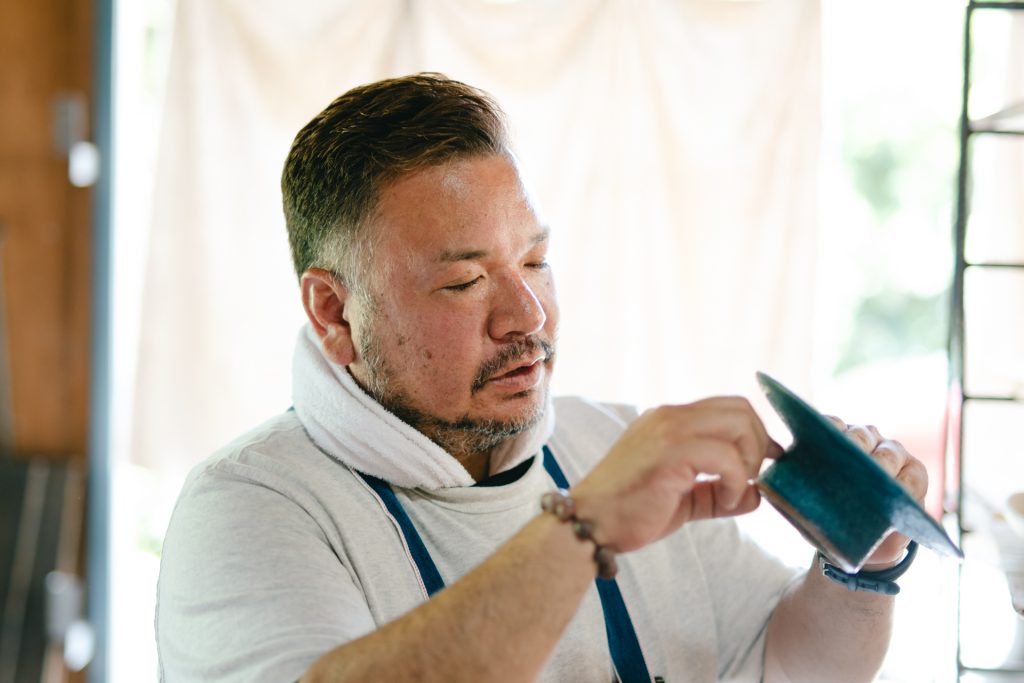
Placed on the counter, its height and balance when sushi is set upon it invoke the imagery of the sea.
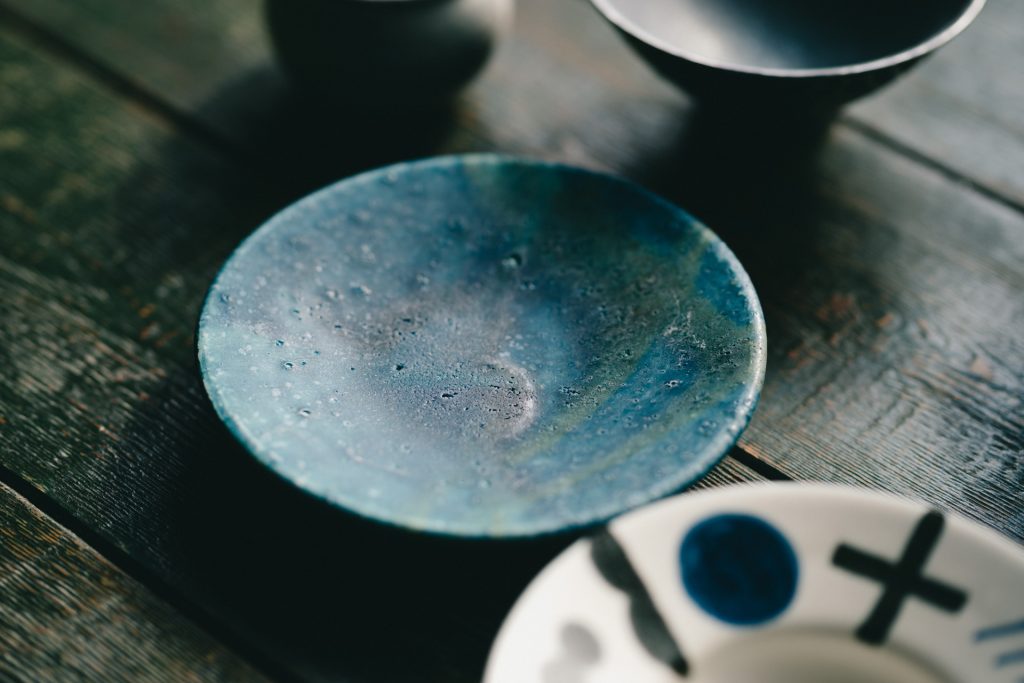
The many faces of the sea, learned from living their lives next to the ocean, are transferred to the finished plate. On that plate is placed the bounty of the sea—sushi.
Well, it’s time to eat.
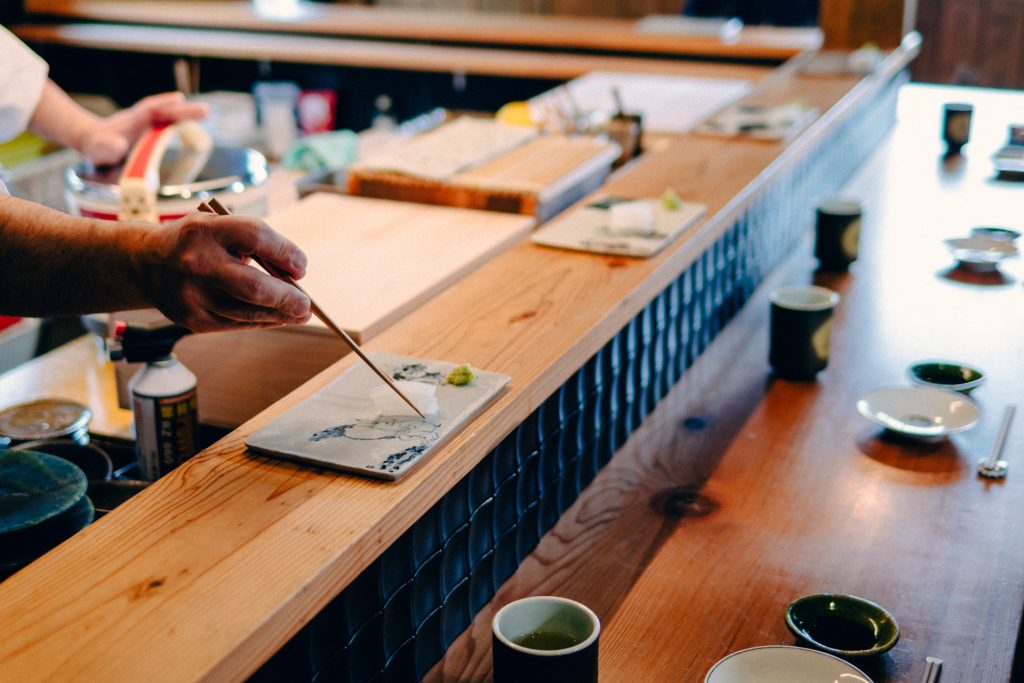
Slices of sashimi are placed one by one on the Jyurogama plate before you.
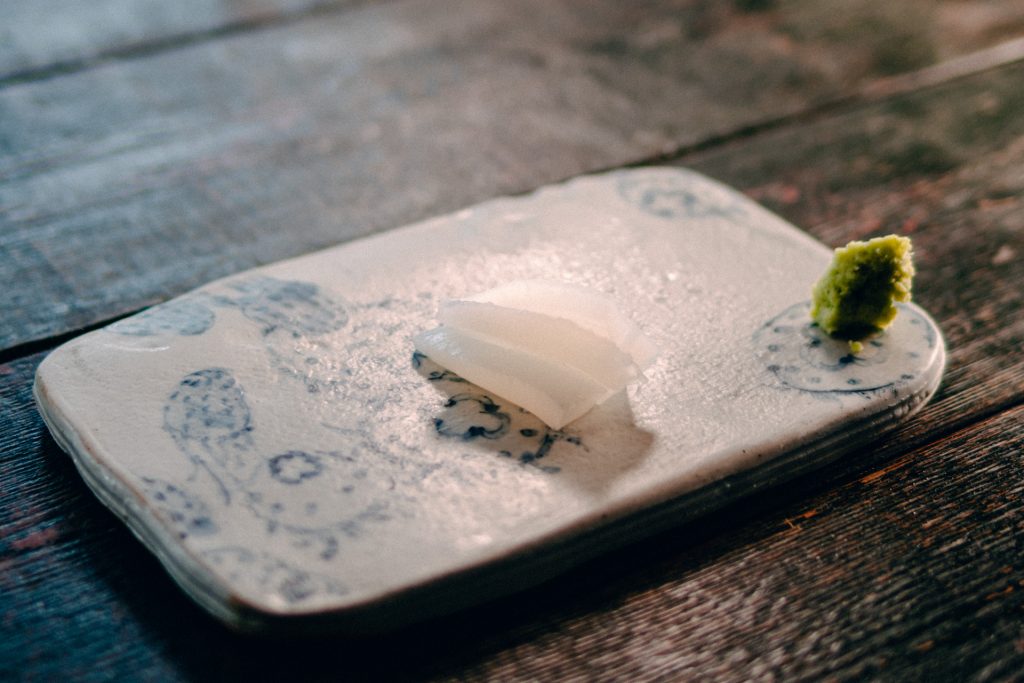
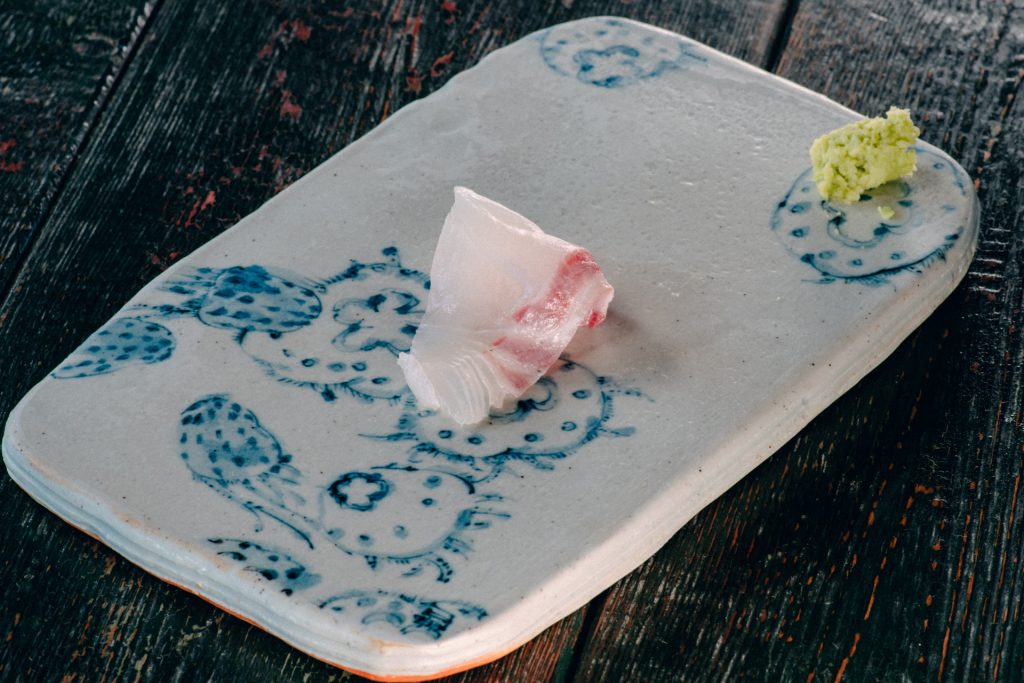
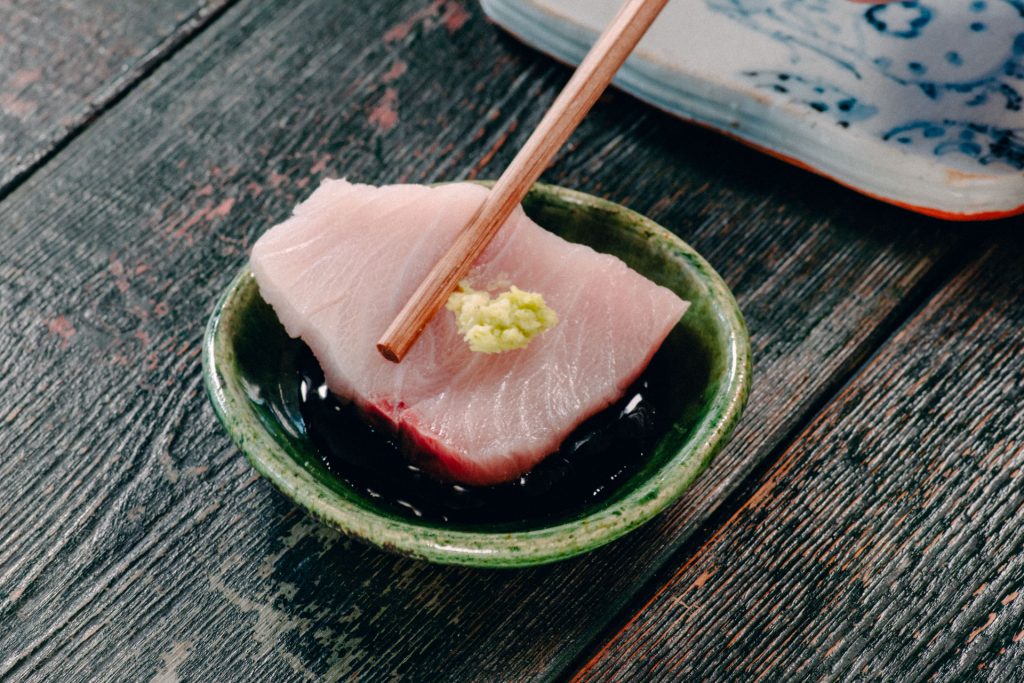
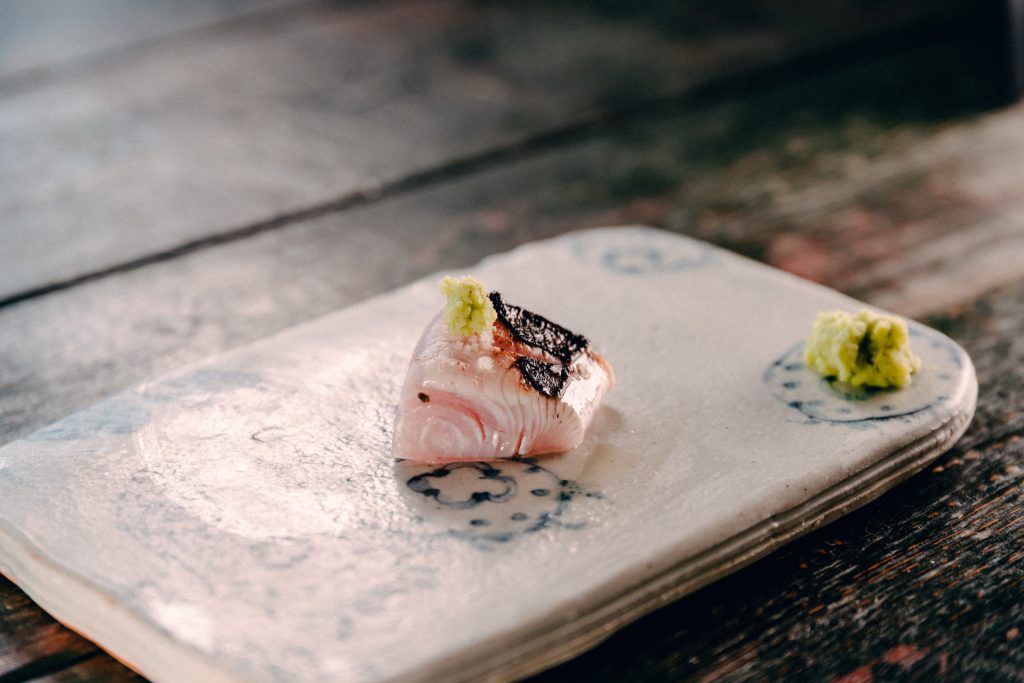
流れるような所作で、この日はアオリイカ、真鯛、熟成ブリ、羽ガツオ…と、切り立てを、その都度いただく。
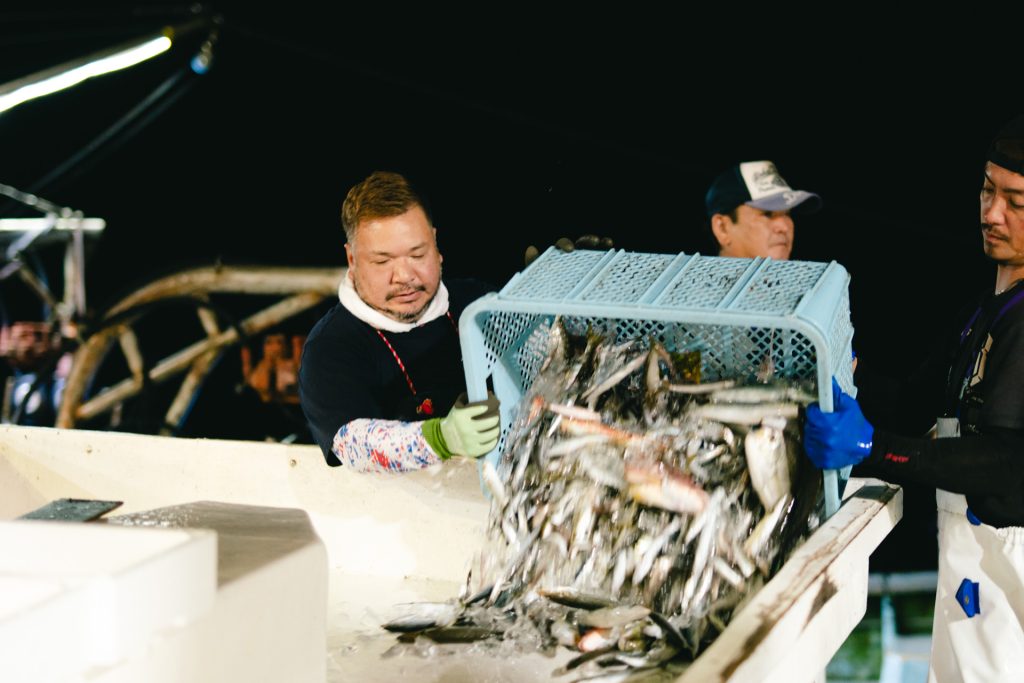
With flowing movements, the day’s fish—bigfin reef squid, red sea bream, mature yellowtail, striped bonito, etc.—are sliced for you to eat.
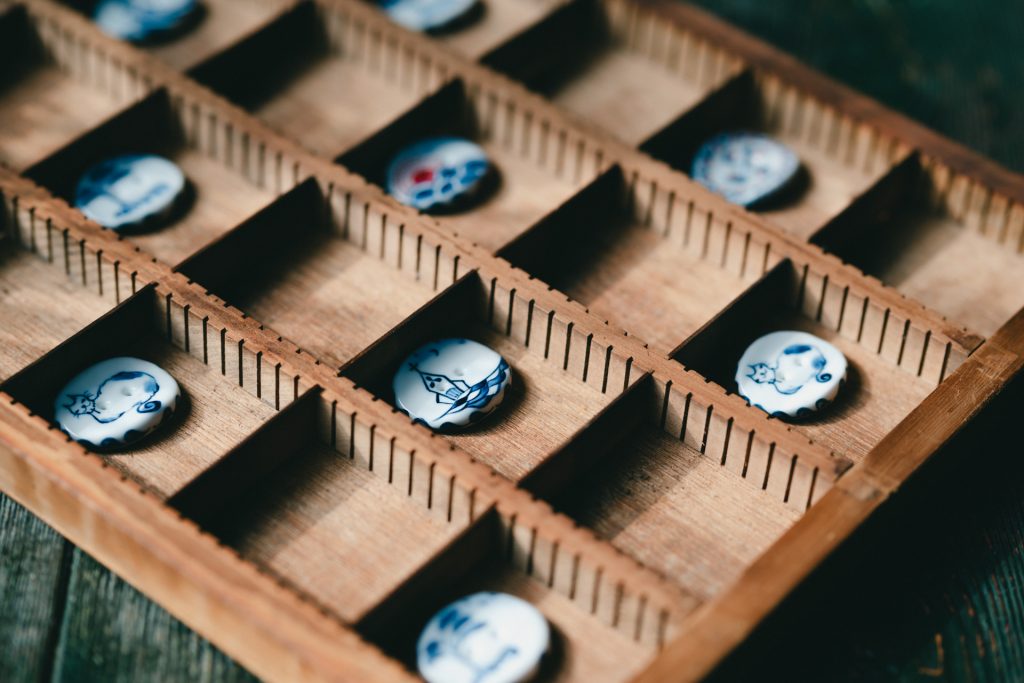
When you pick up your chopsticks, take a look at the chopstick rests. They are Amakusa buttons, small but with a strong presence. These are also made of Amakusa porcelain. These little buttons, individually made and painted, are so popular that production can’t keep up with demand.
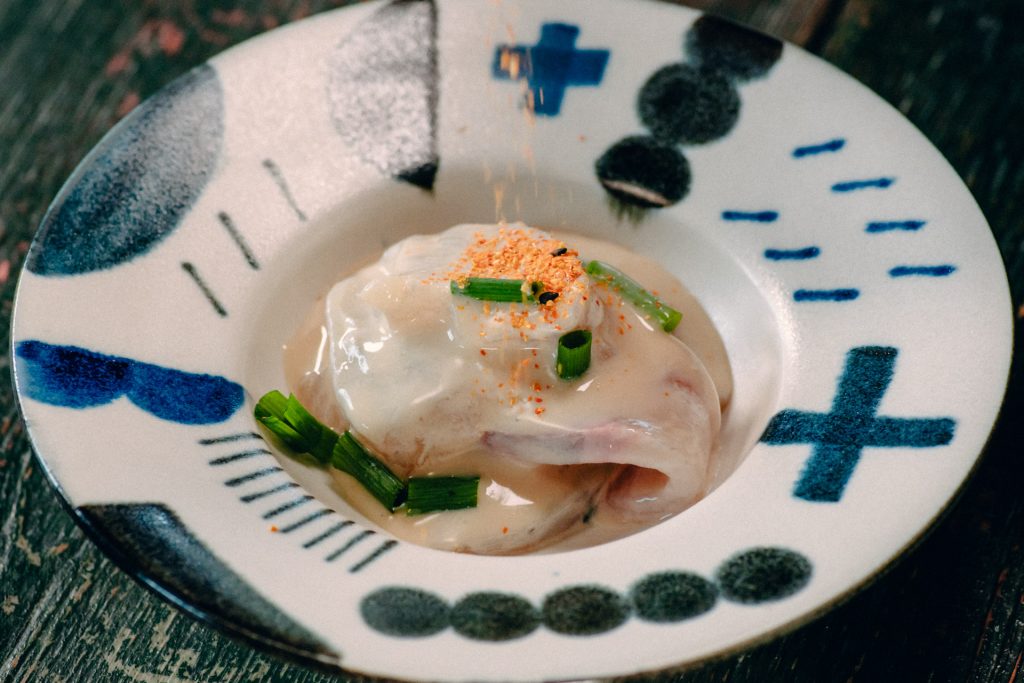
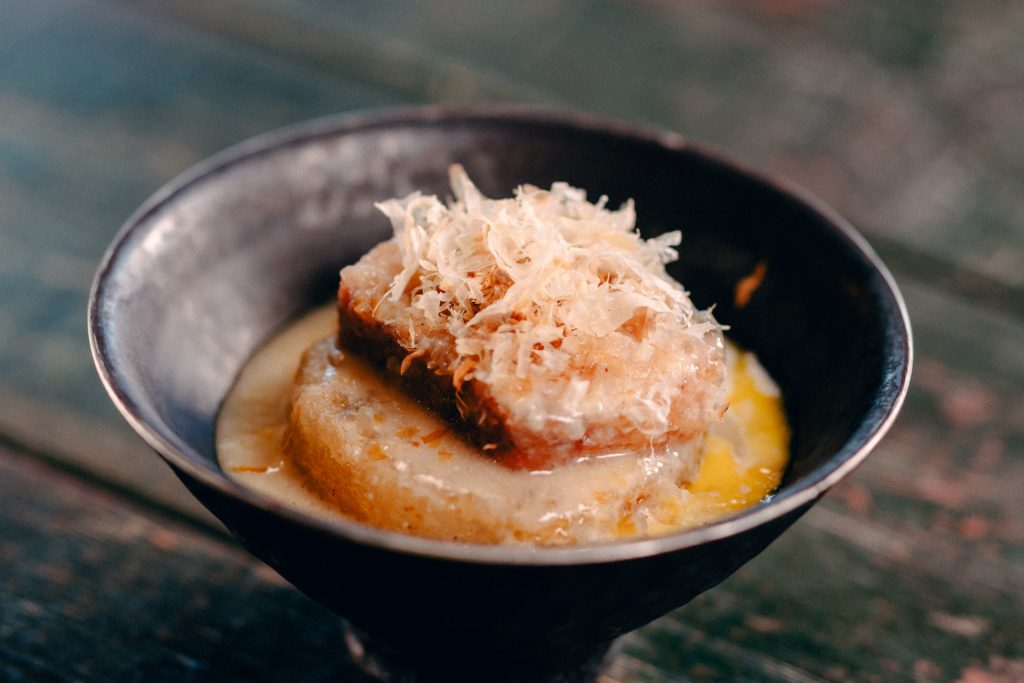
It’s finally sushi time.
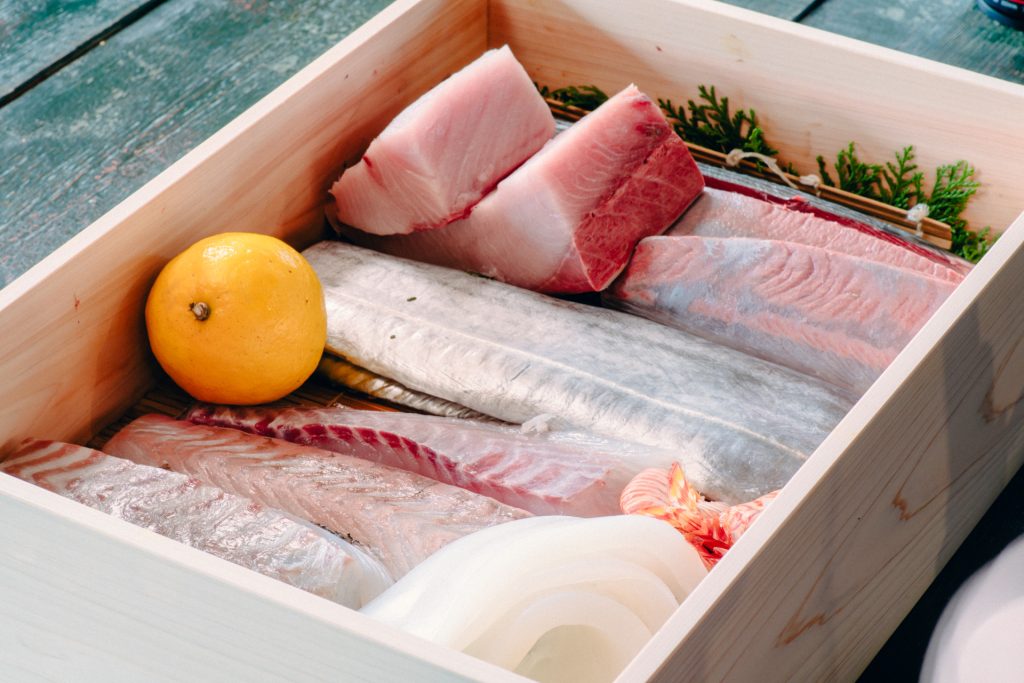
Amakusa Hinoki is a new local brand that has created several new items. Chef Miyashita ordered a box of seafood. Not only does the wood have a beautiful grain, but it also has a nice aroma. It looks like a treasure chest, with the seafood carefully arranged inside it. Chef Miyashita himself is fascinated by this brand-new seafood box.
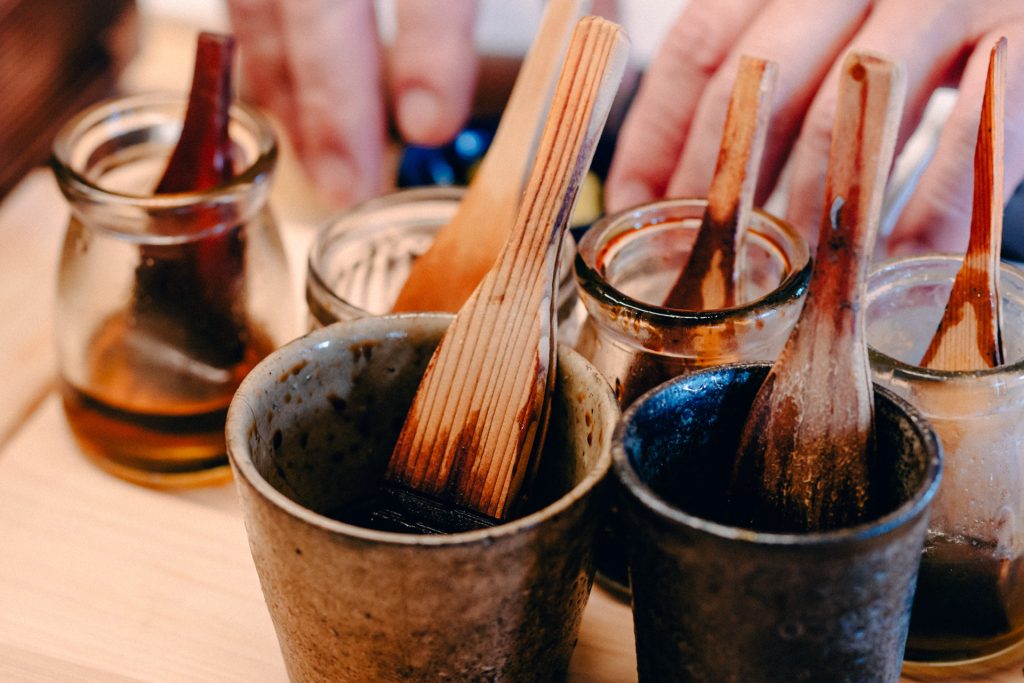
Chef Miyashita makes original sushi with various flavorings. “It’s boring to always use soy sauce. At least, I get bored,” he reasons.
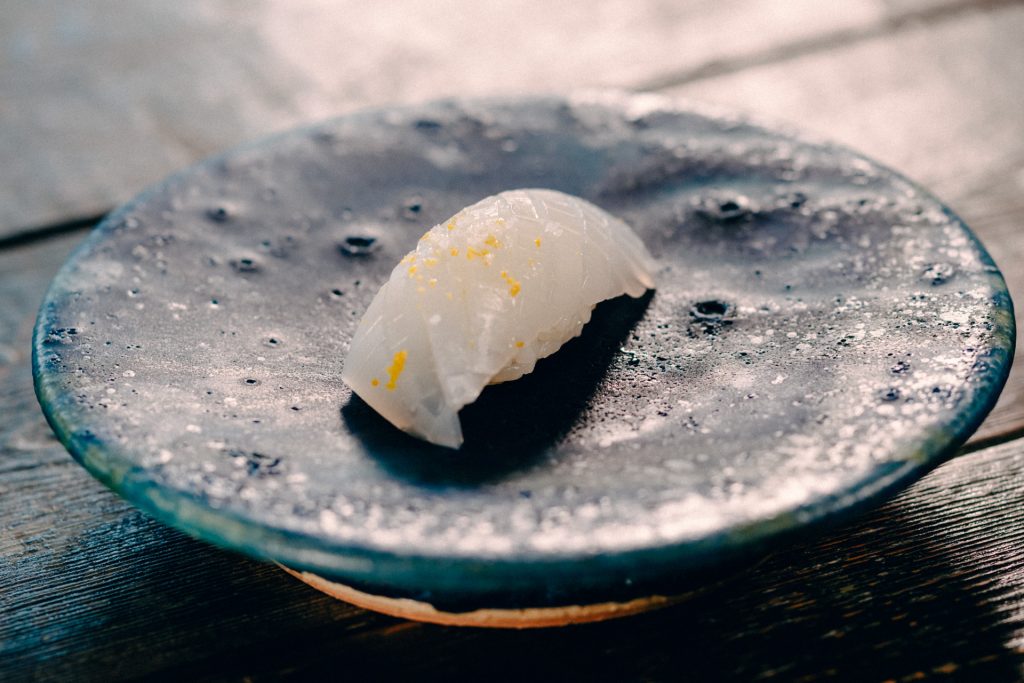
Bigfin reef squid, which also appeared in the sashimi course, is dressed with a hint of salt and citron and placed on the sushi plate.
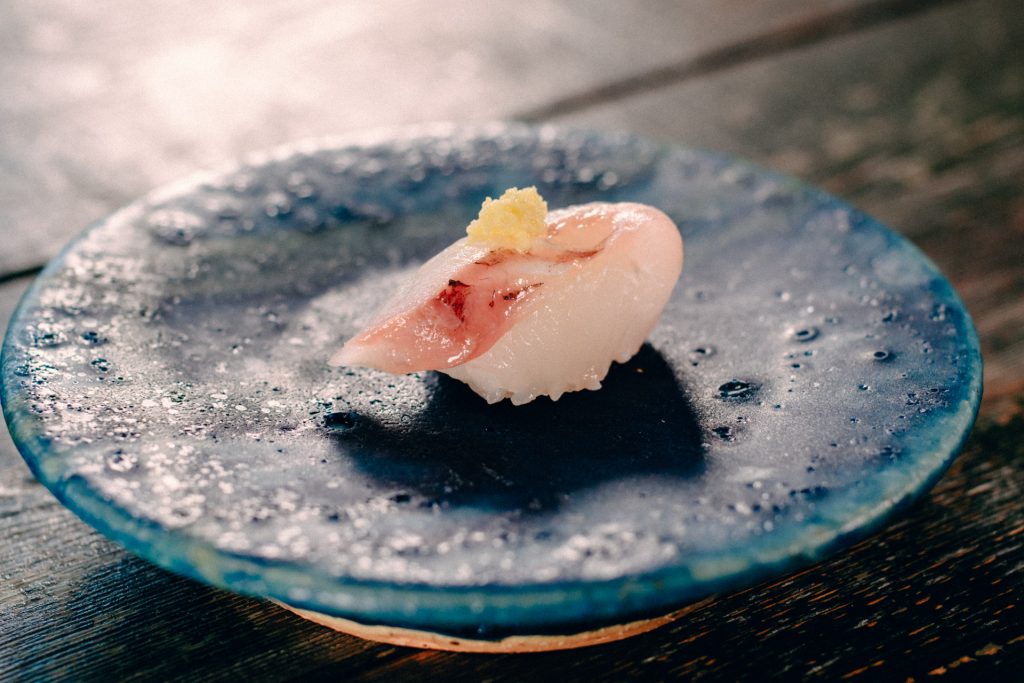
Red sea bream is pressed into a fold so that it is easy to eat. It is glazed with boiled sake and topped with grated ginger.
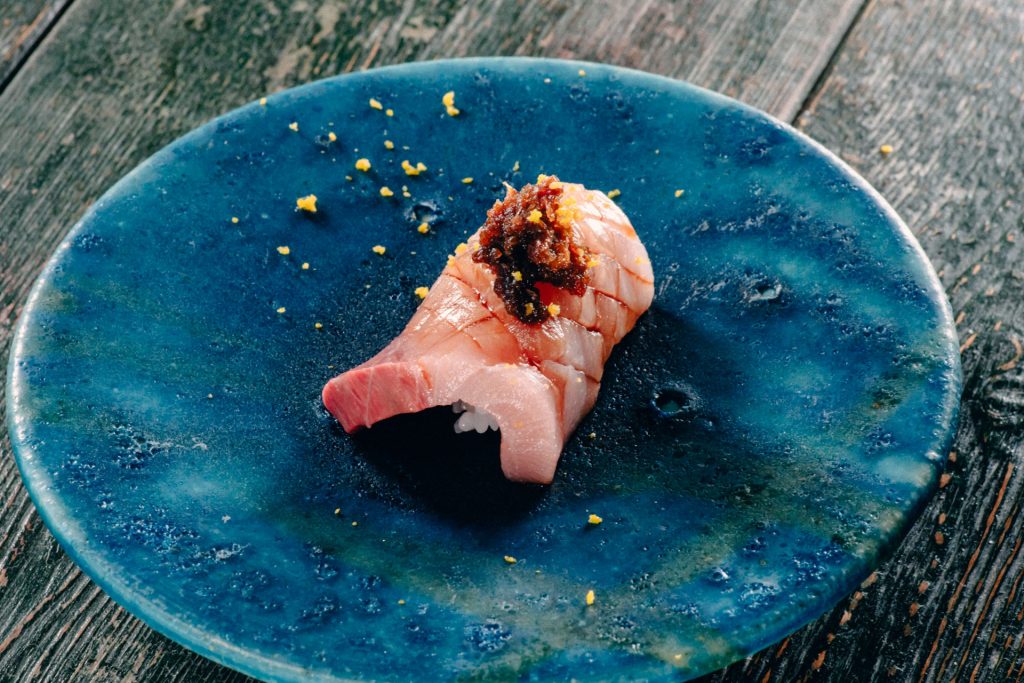
Mature yellowtail is dressed with Amakusa’s sweet soy sauce and grated white radish for a refreshing flavor.
It is Chef Miyashita’s desire to have people taste Sakitsu by comparing the sashimi and sushi and experiencing the flavors and depth of the fish. The happy time continues.
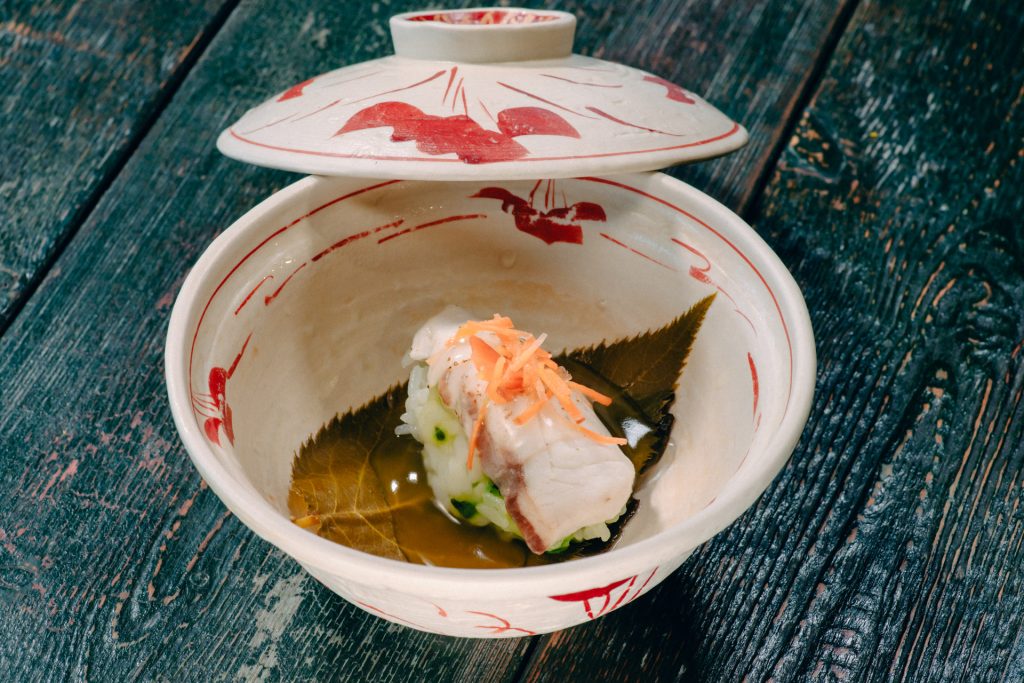
The aroma of cherry blossoms rises as soon as the cover is removed from the bowl. This “steamed sushi” will warm the cockles of your heart. Sushi rice with perilla seeds mixed in, white meat fish, a warm salted cherry tree leaf. Break it up with your chopsticks and pop it in your mouth. Just the right amount of saltness, the flavor of the fish, and the aroma of cherry blossom. It’s a dish that feels like spring.
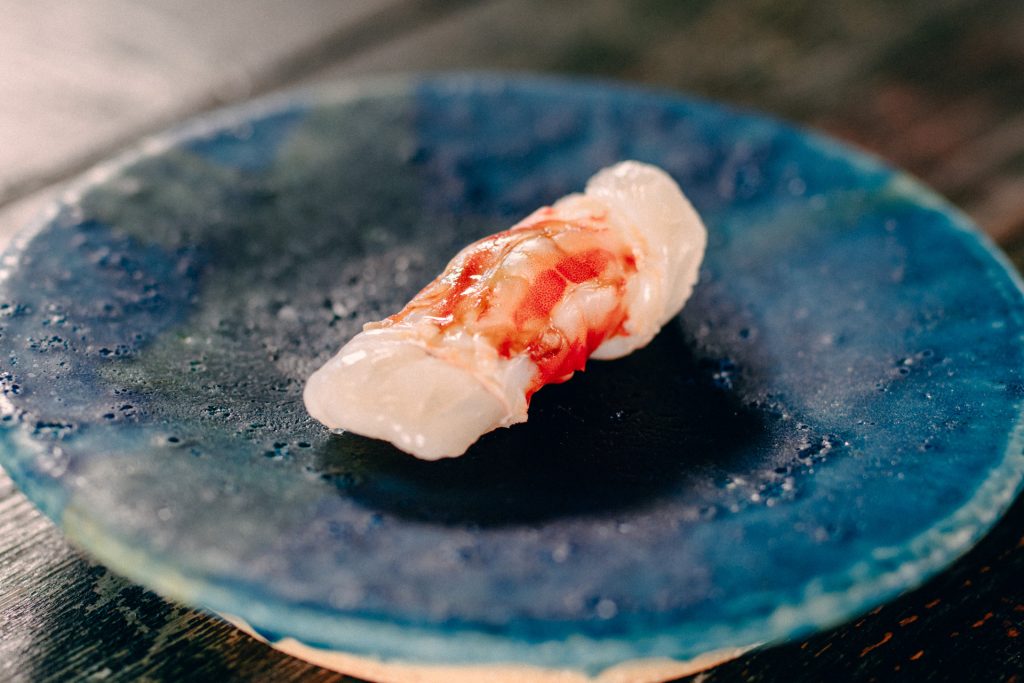
A half-cooked prawn is wrapped around sushi rice like a folding door. Feel the rich sweetness.
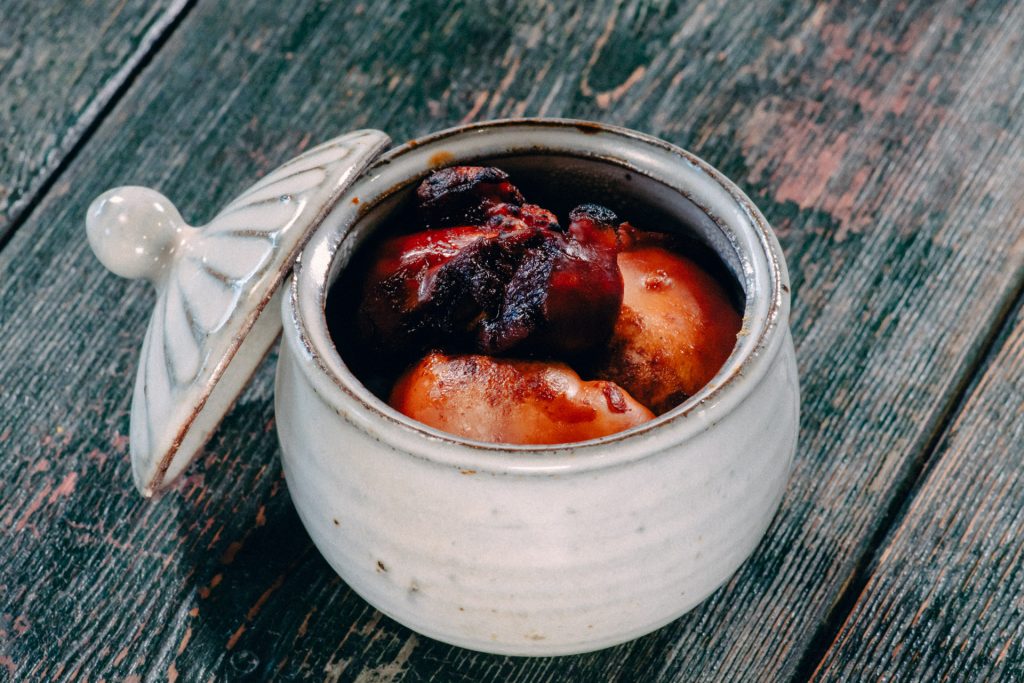
Roasted milt is boiled in a sweet–salty sauce and put on top of rice. If you mix it up, it tastes like risotto. Today’s milt is from a tiger puffer.
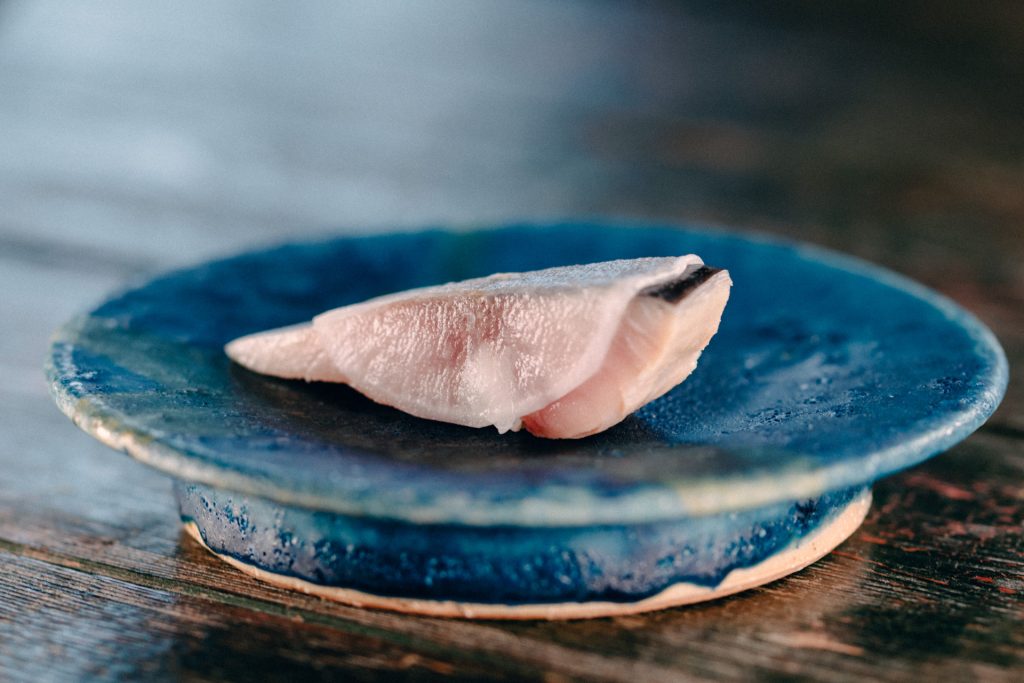
Mackerel is pressed into the shape of a nightingale. The fat in the mackerel, the sweet white radish, and the crunchy texture are exquisite.
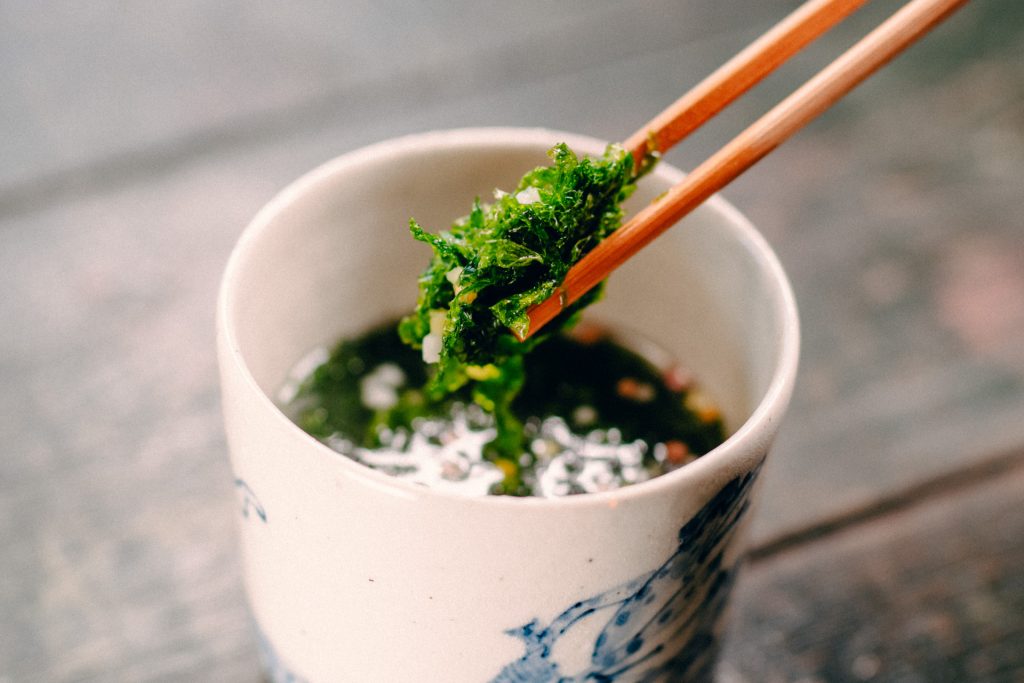
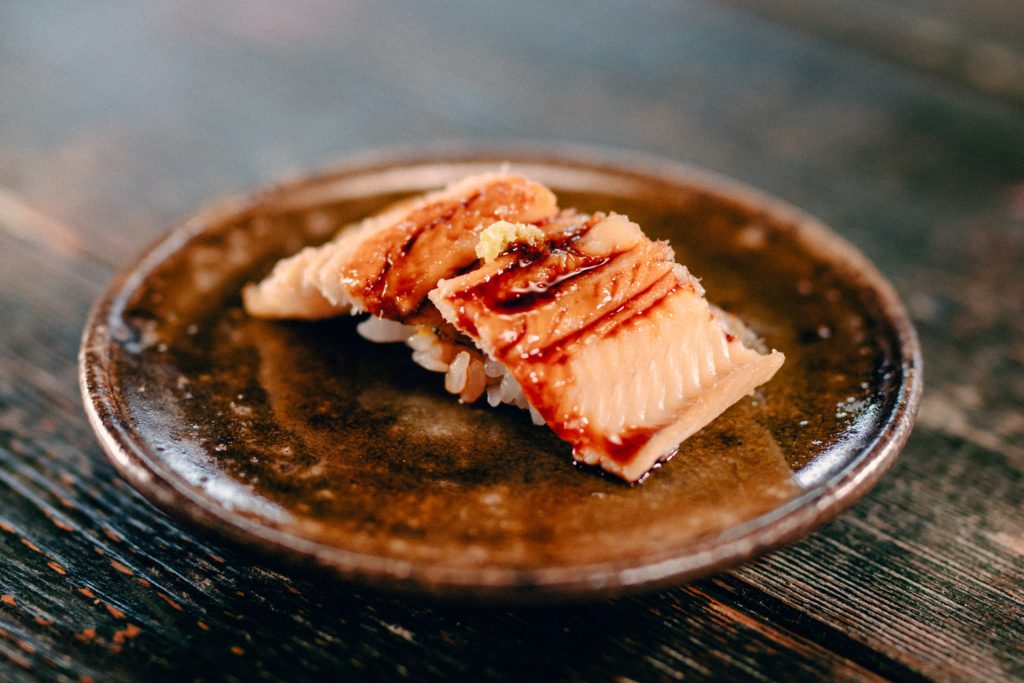
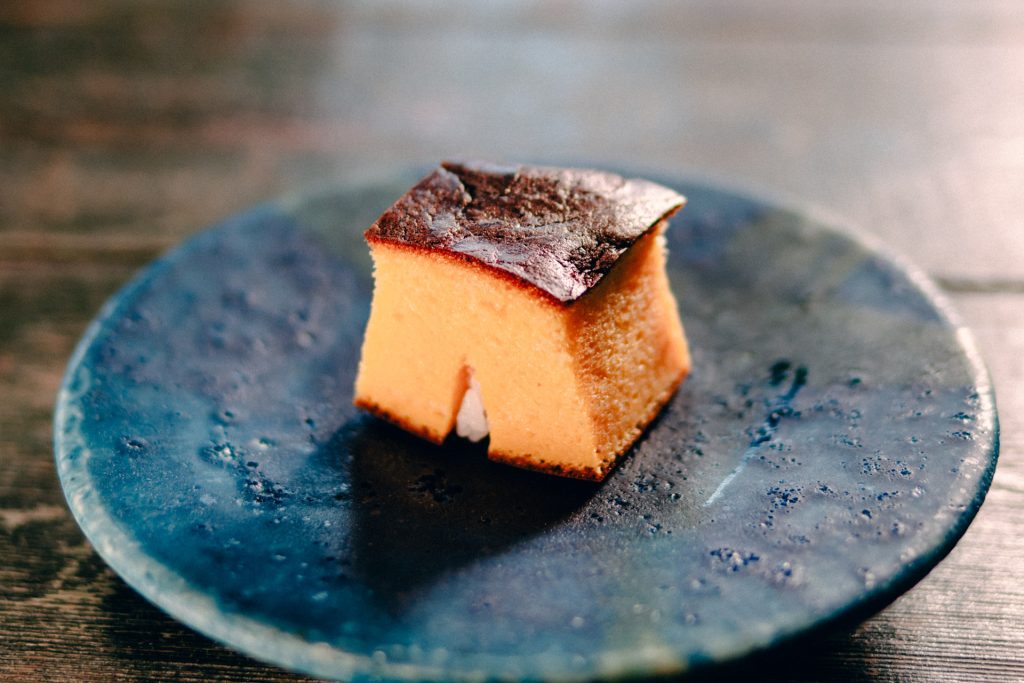
Sponge cake made with “tamango,” an Amakusa brand of egg from chickens that had mangoes mixed in with their feed. It is so fluffy that it almost melts in your mouth.
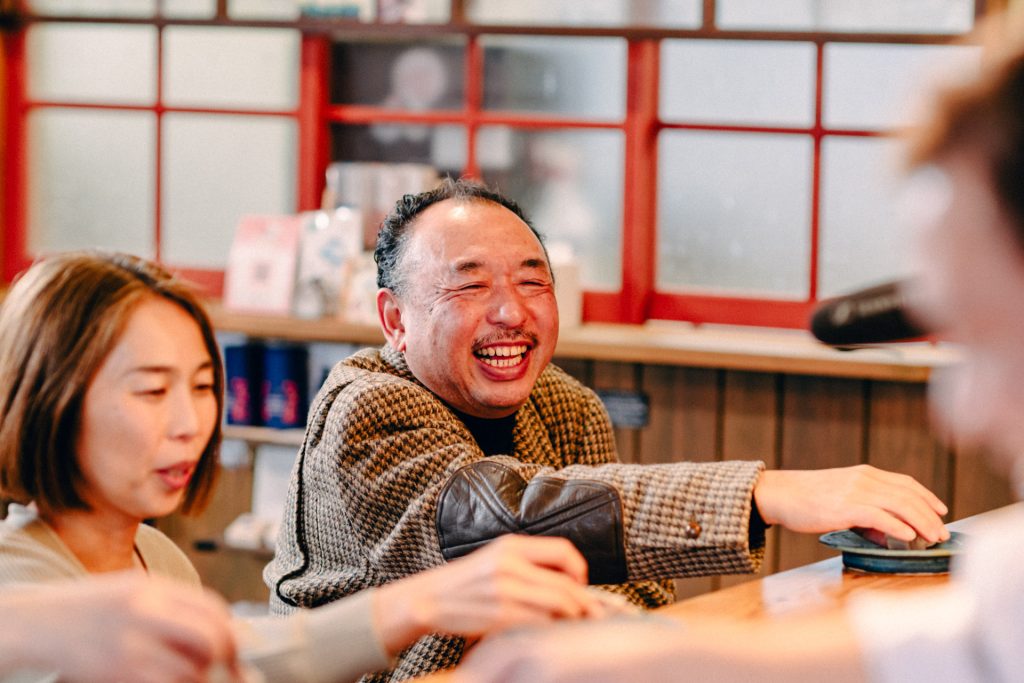
Today’s encounter has come to an end, but the feast changes with the seasons. There is milt in the winter, purple sea urchin in the spring, and so on, with different fish and flavors in each season. Sushi can be enjoyed at Kurage in every encounter and in every season.
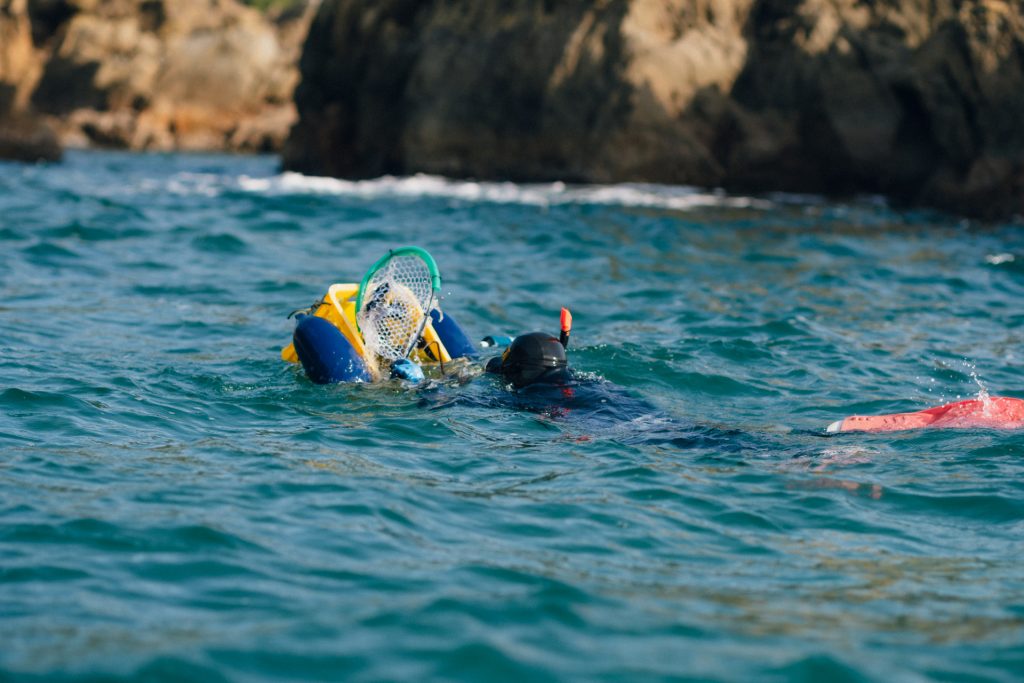
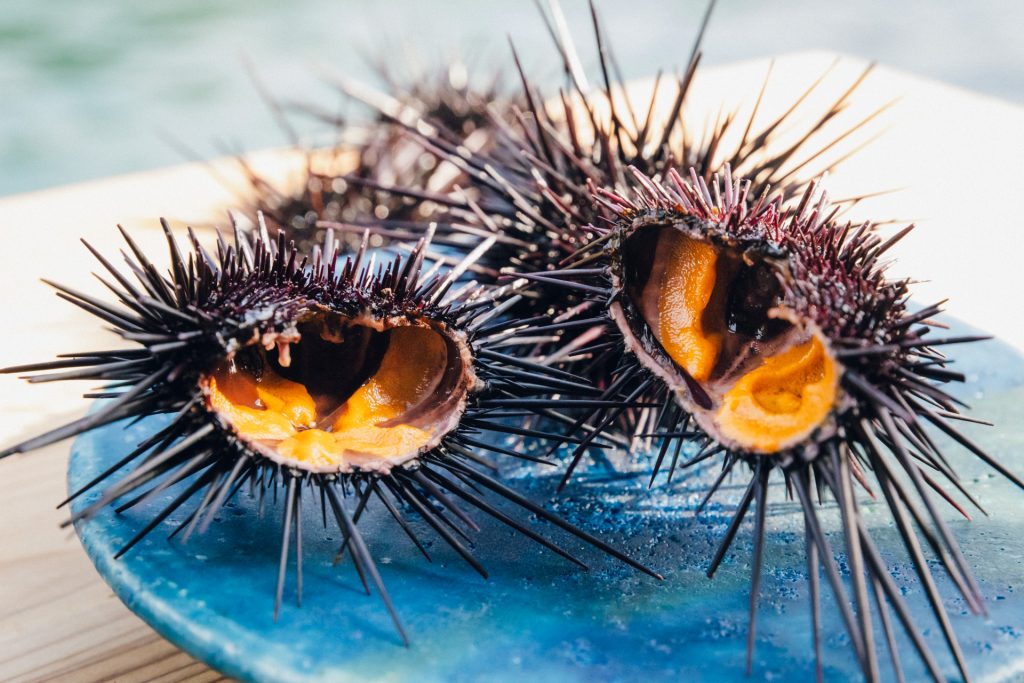
You can also enjoy the sea urchin that Chef Miyashita harvested during a dive and fish that he caught himself.
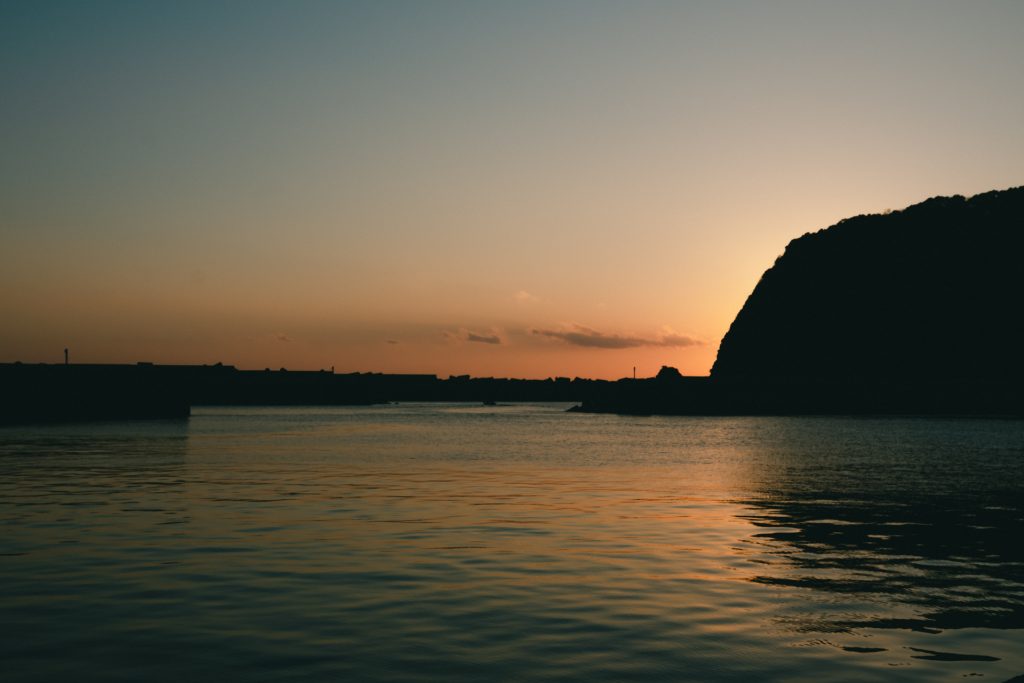
“Sakitsu’s ambiance also changes with the time of day. Having a meal here can give you a chance to see Sakitsu from a number of angles.”
To be sure, Sakitsu’s ambiance can be different even before and after a meal. “This is the Sakitsu that I encountered.” Let’s have this conversation while enjoying a food trip.
Restaurant information
Reservations for the Premium Menu
Each restaurant has different ingredients in its Premium Menu, so diners may enjoy Kumamoto’s seasonal dishes. Please directly contact the restaurant for details.
Kurage Premium Menu
Price:Starting at 16,500 yen per person (please call regarding timing)
Tel.: 0969-79-0051
 Facebookでシェア
Facebookでシェア Twitterでシェア
Twitterでシェア LINEでシェア
LINEでシェア